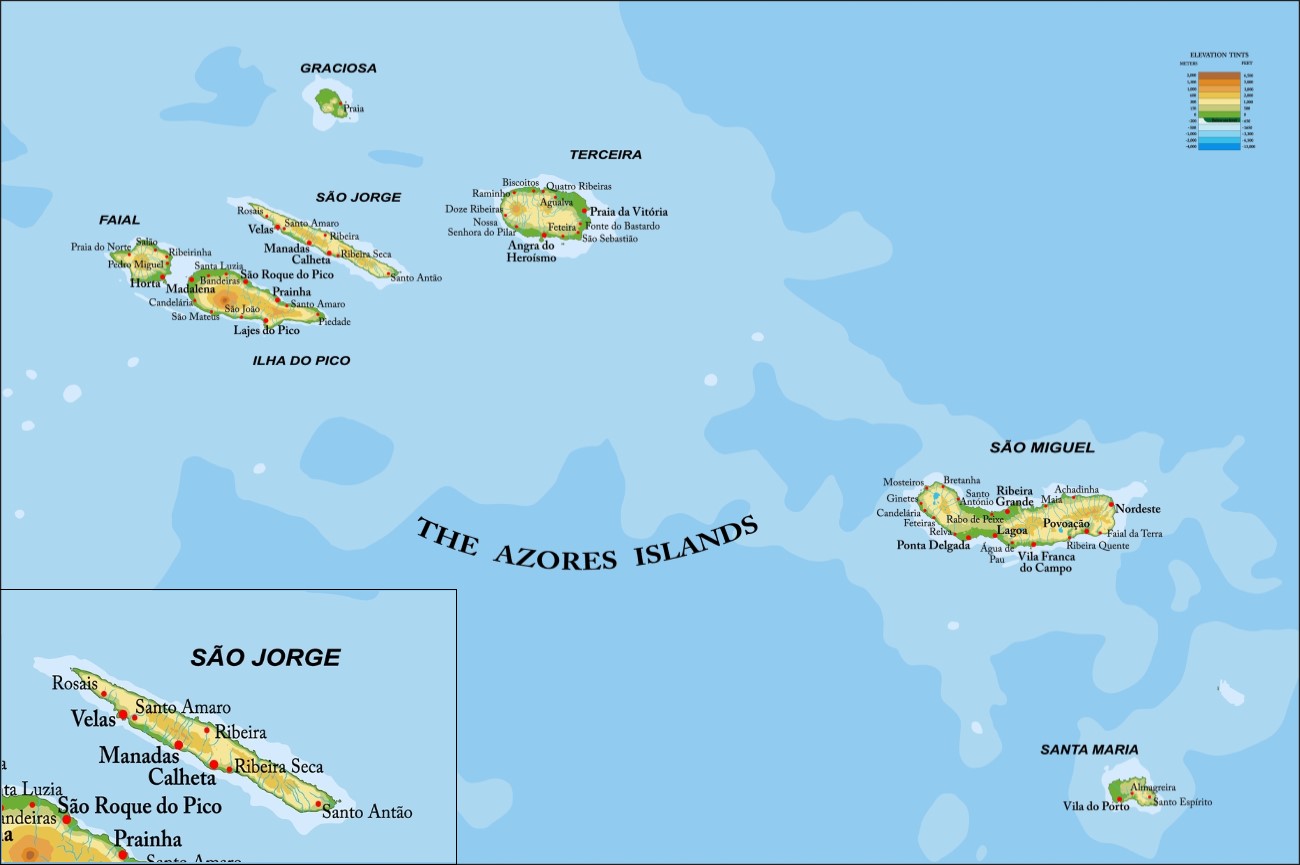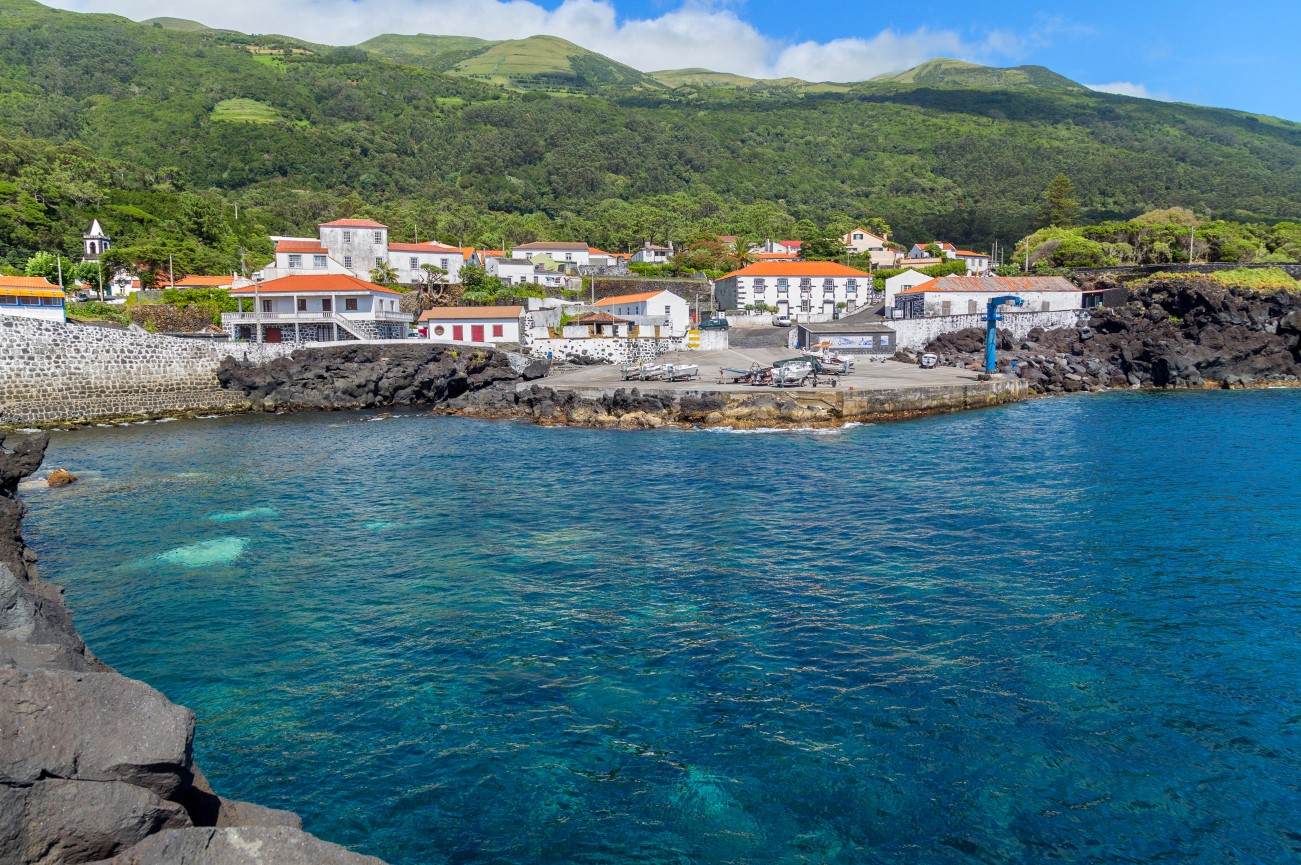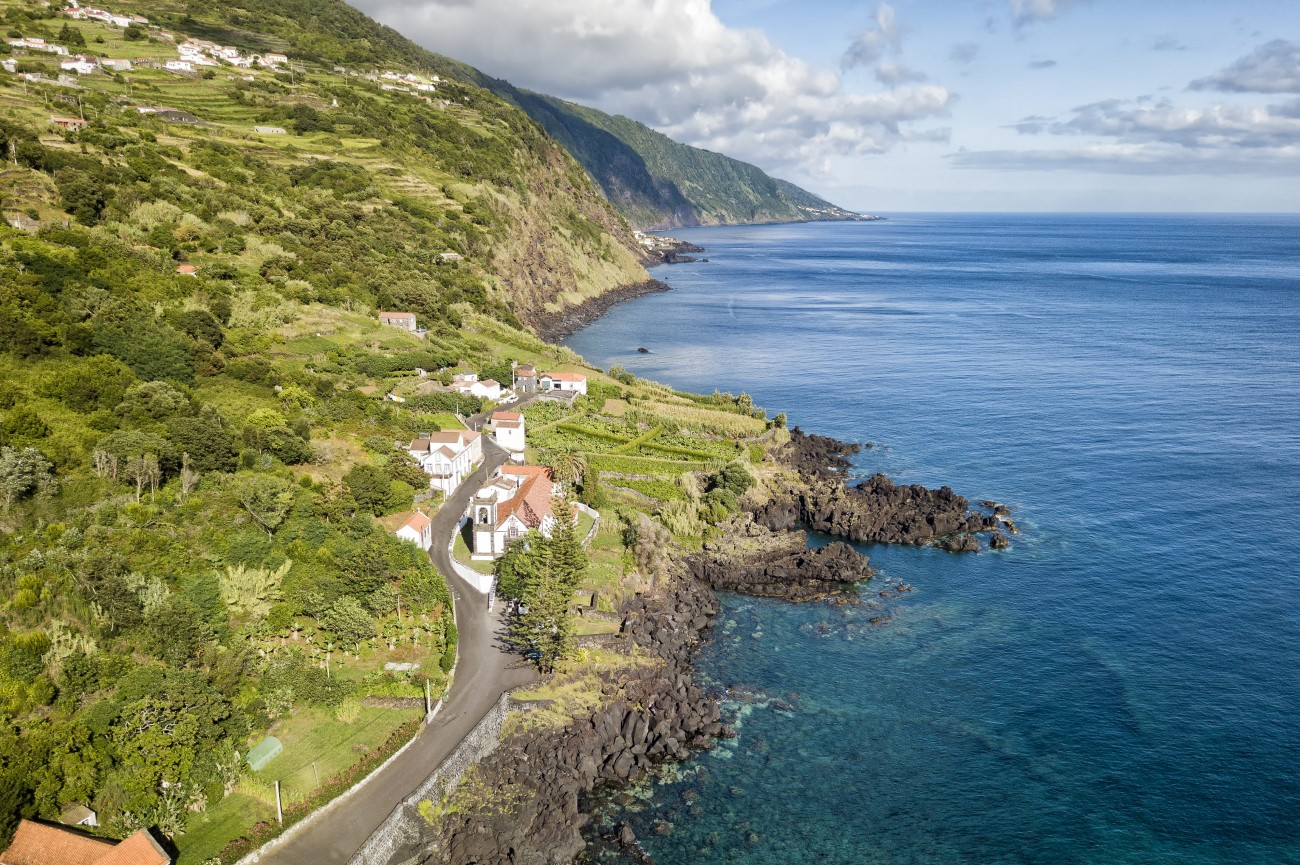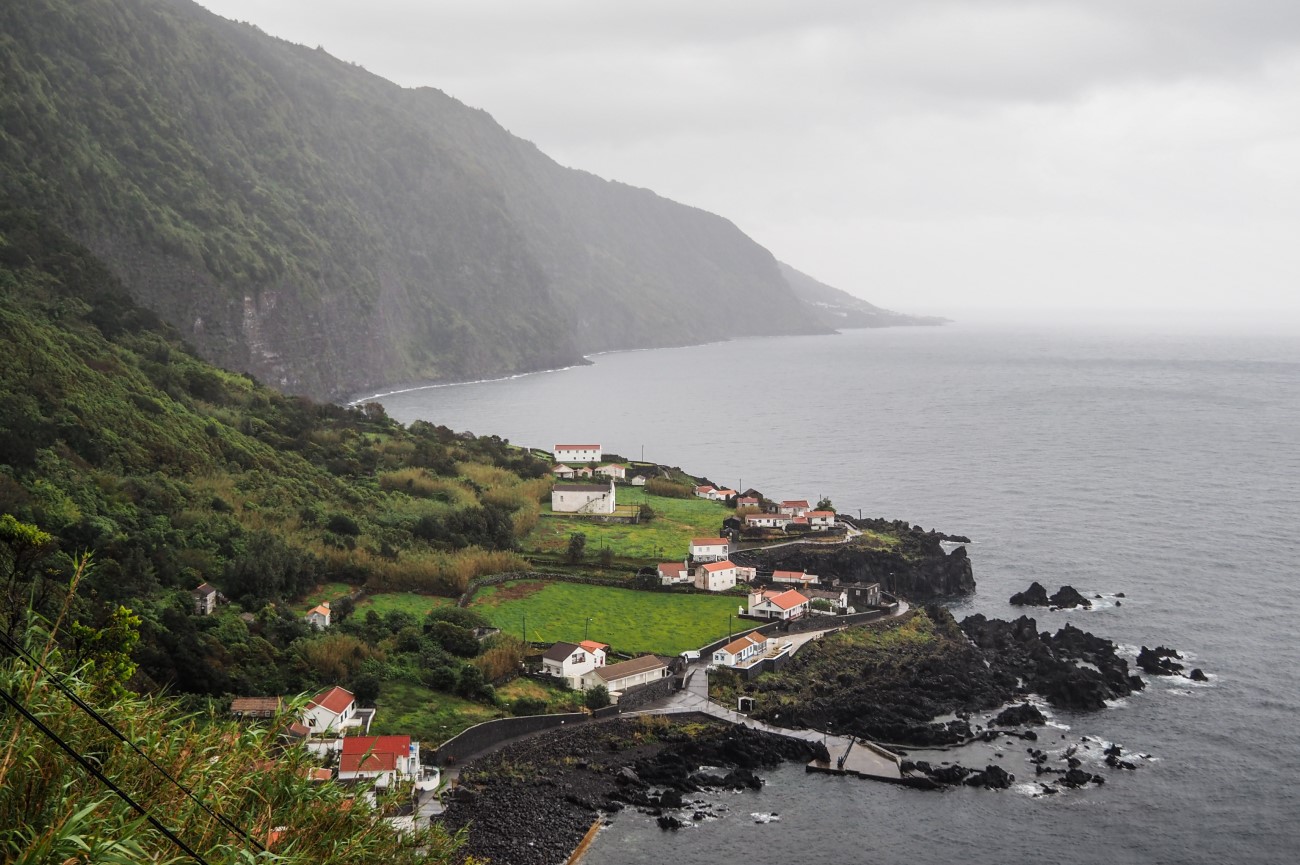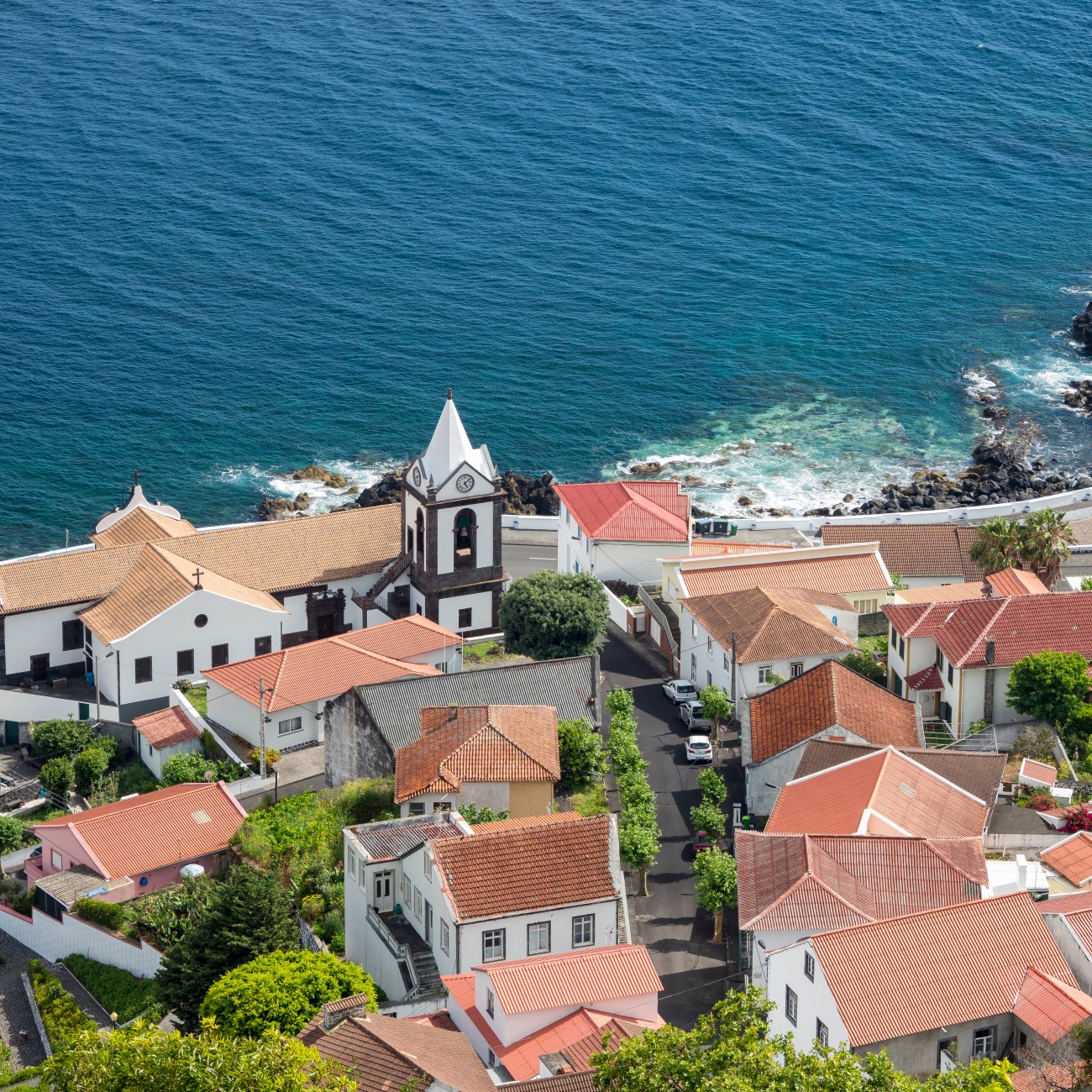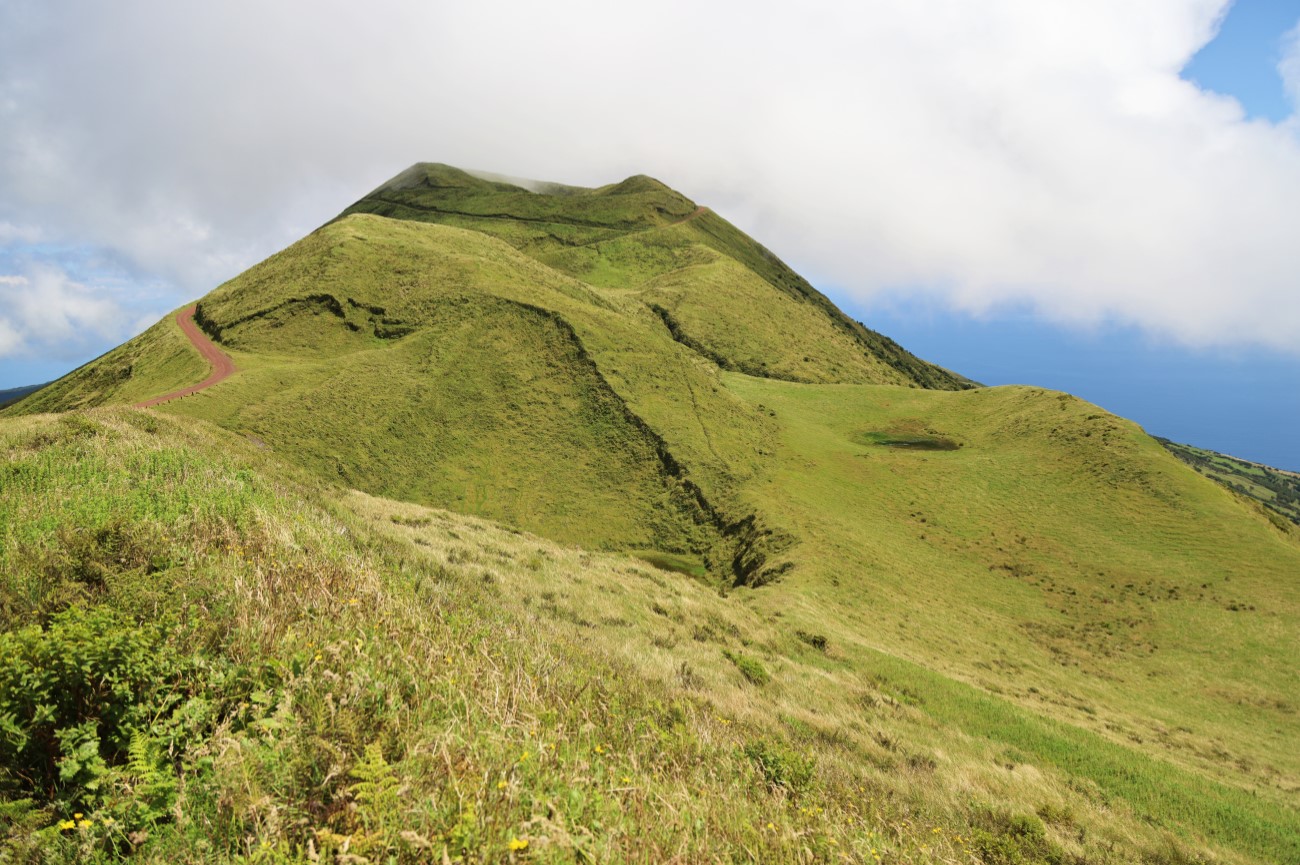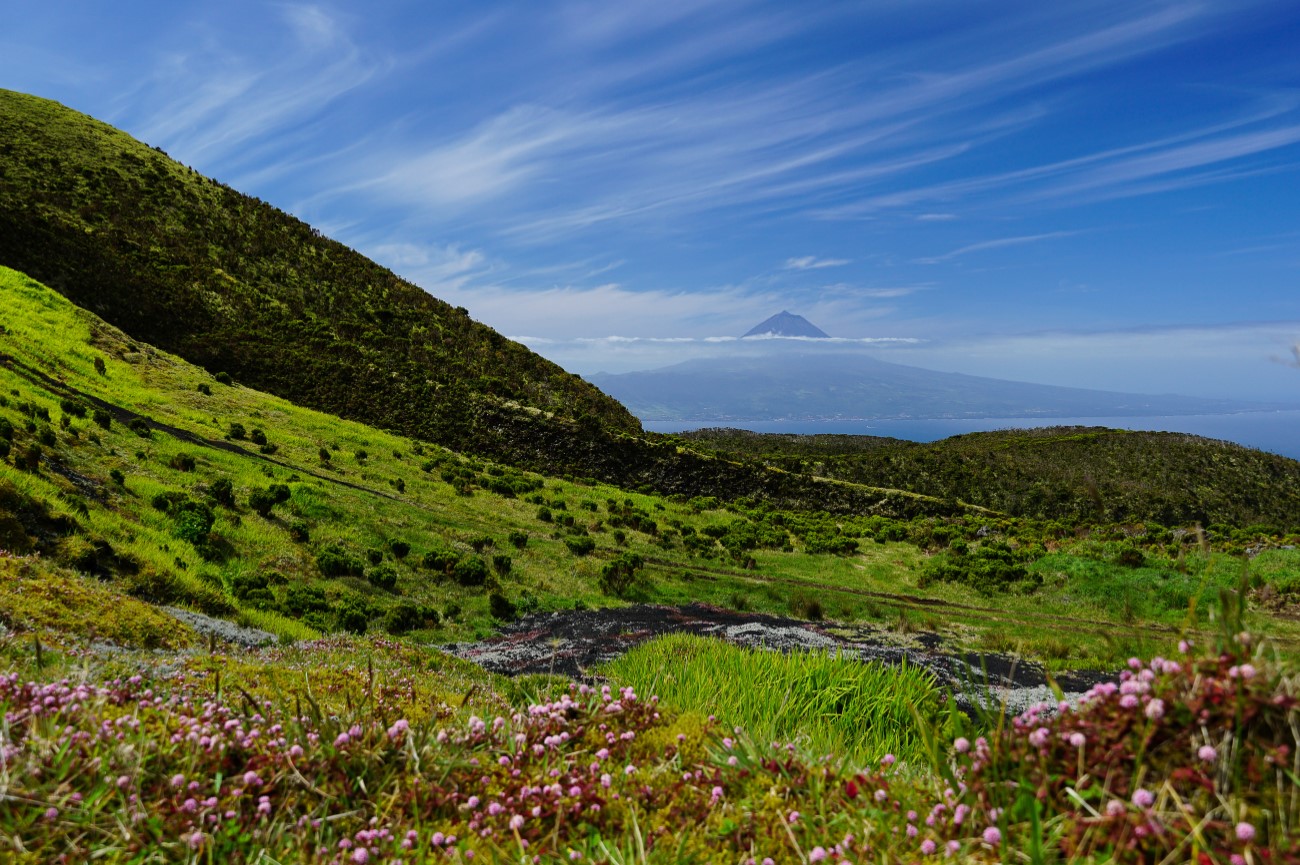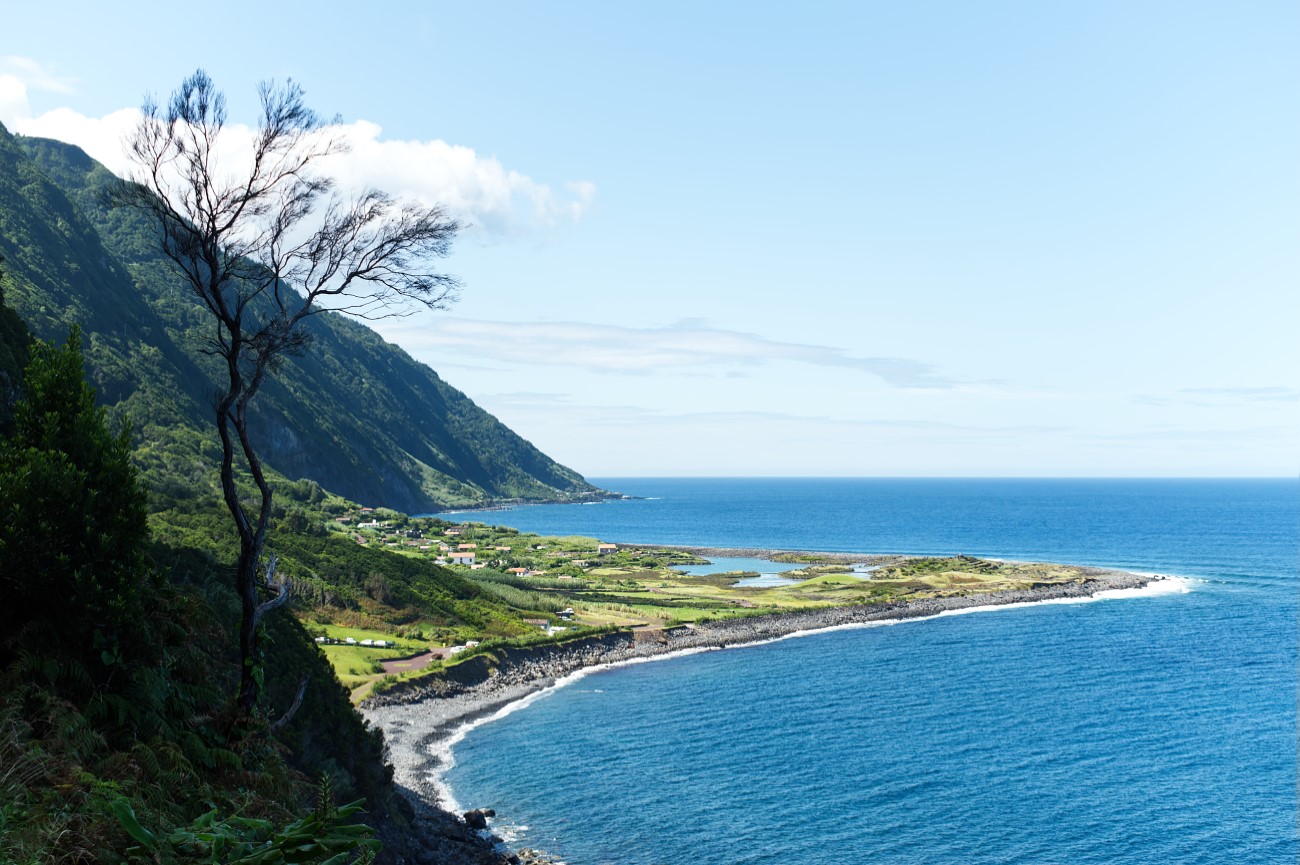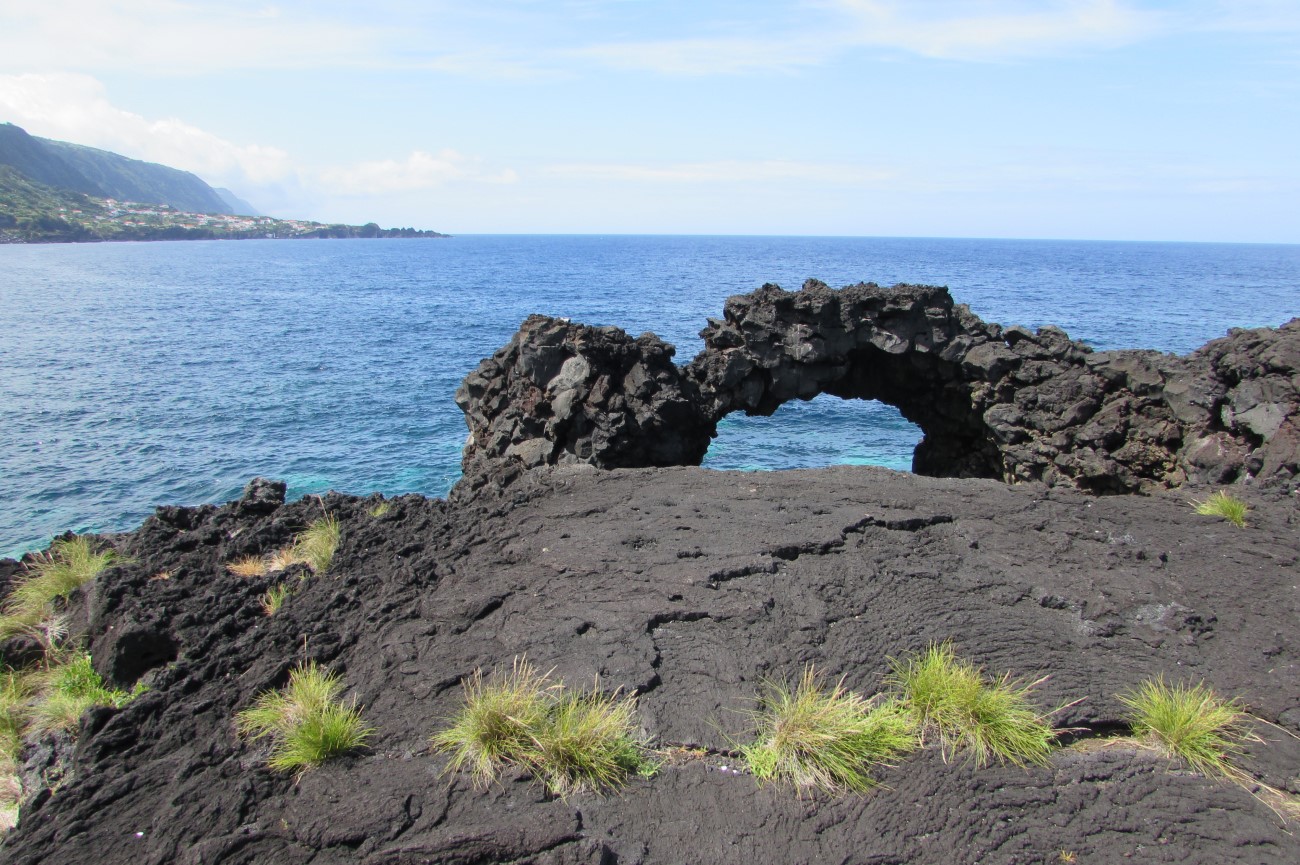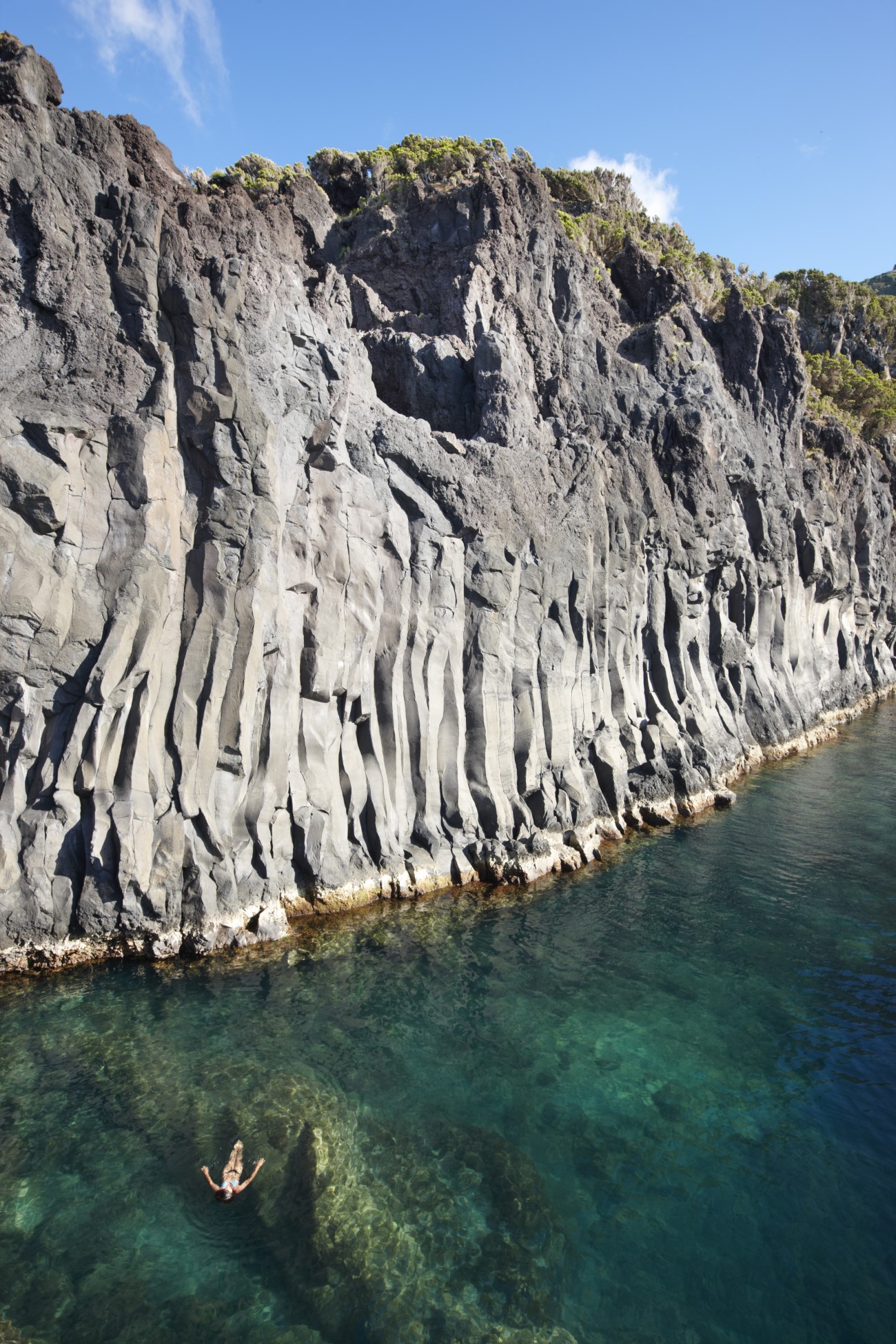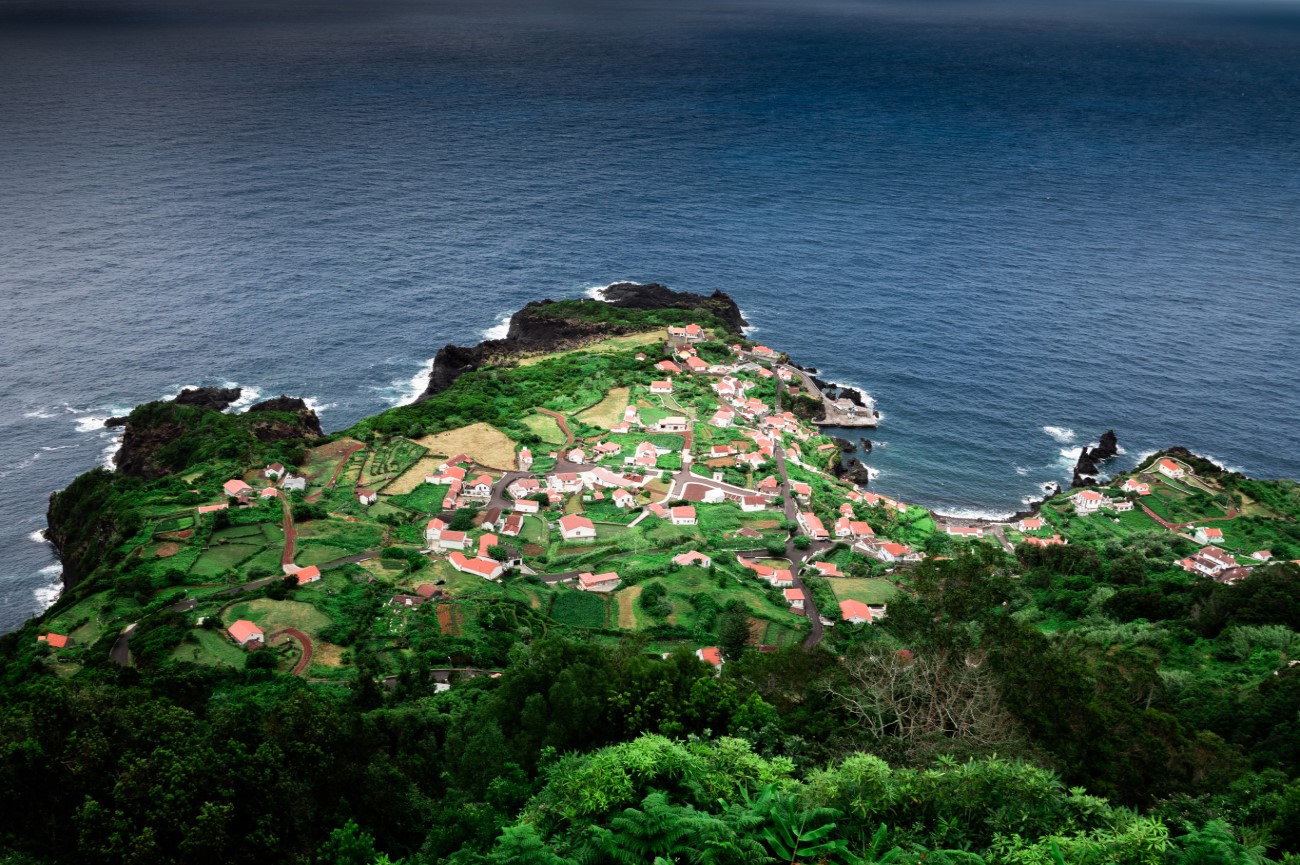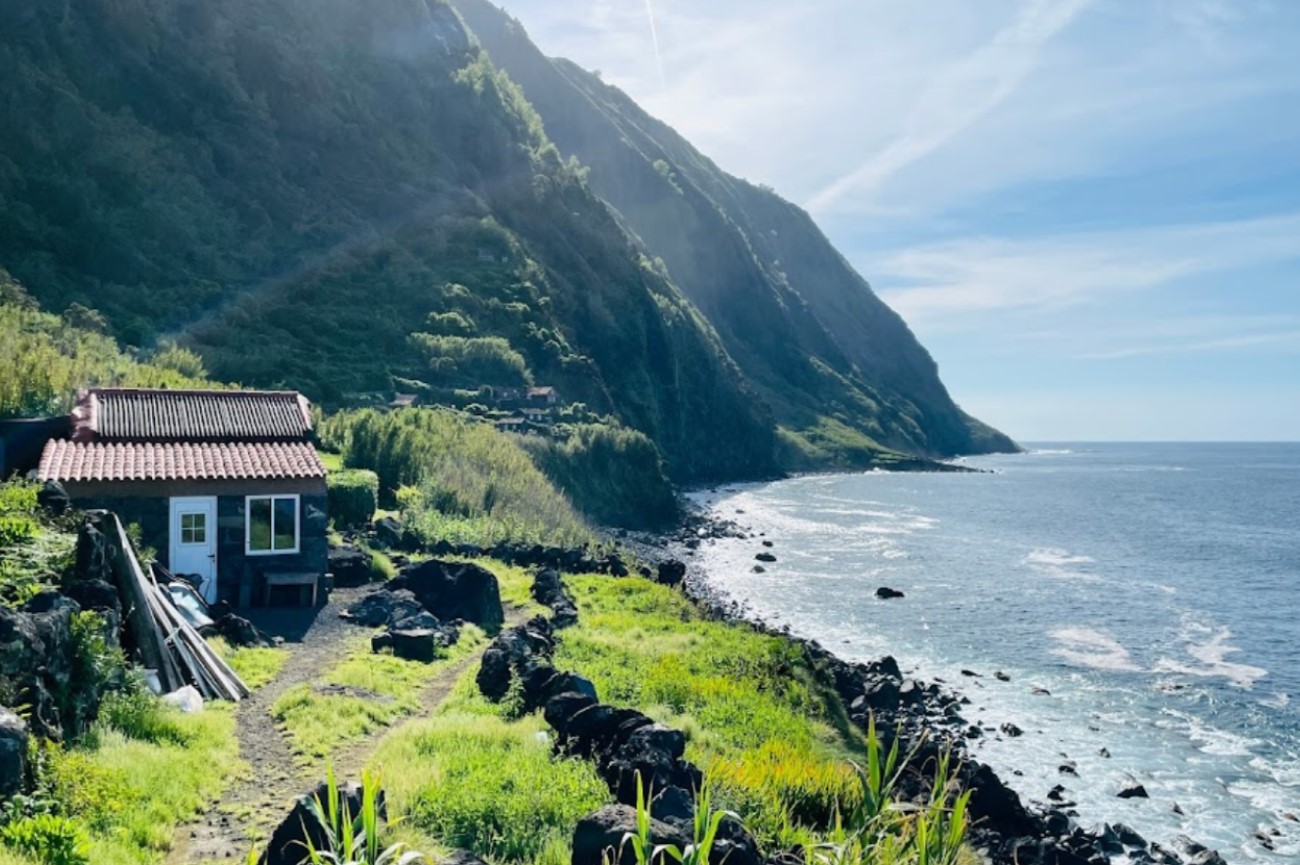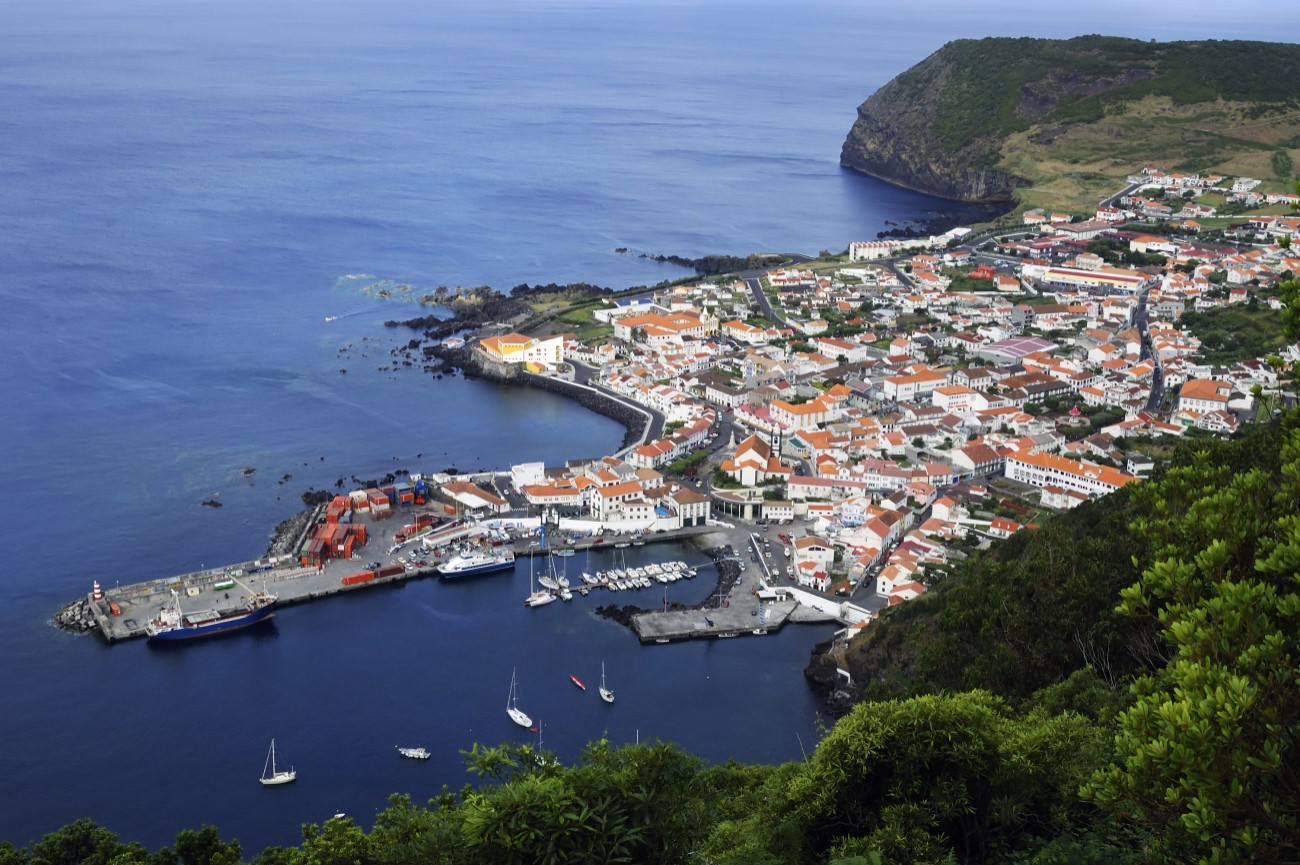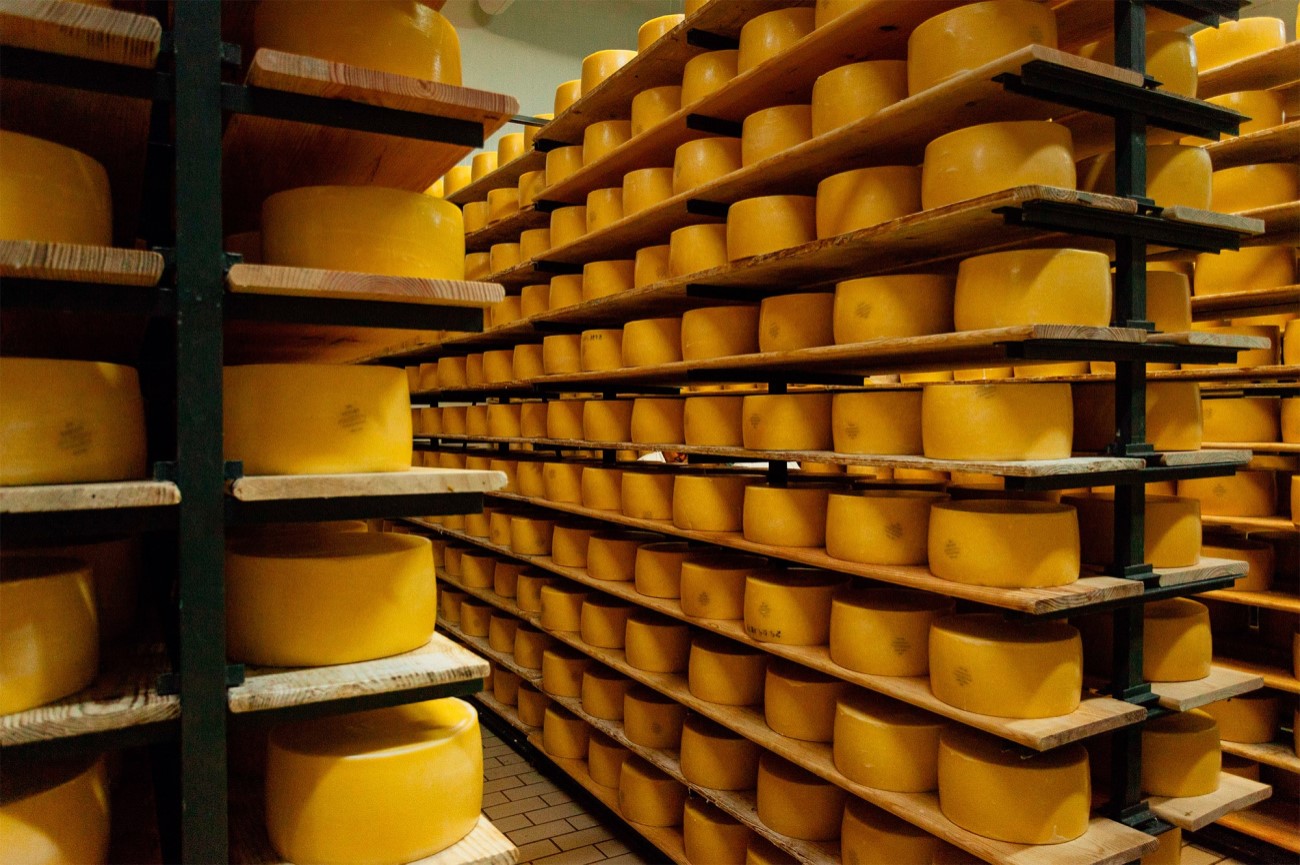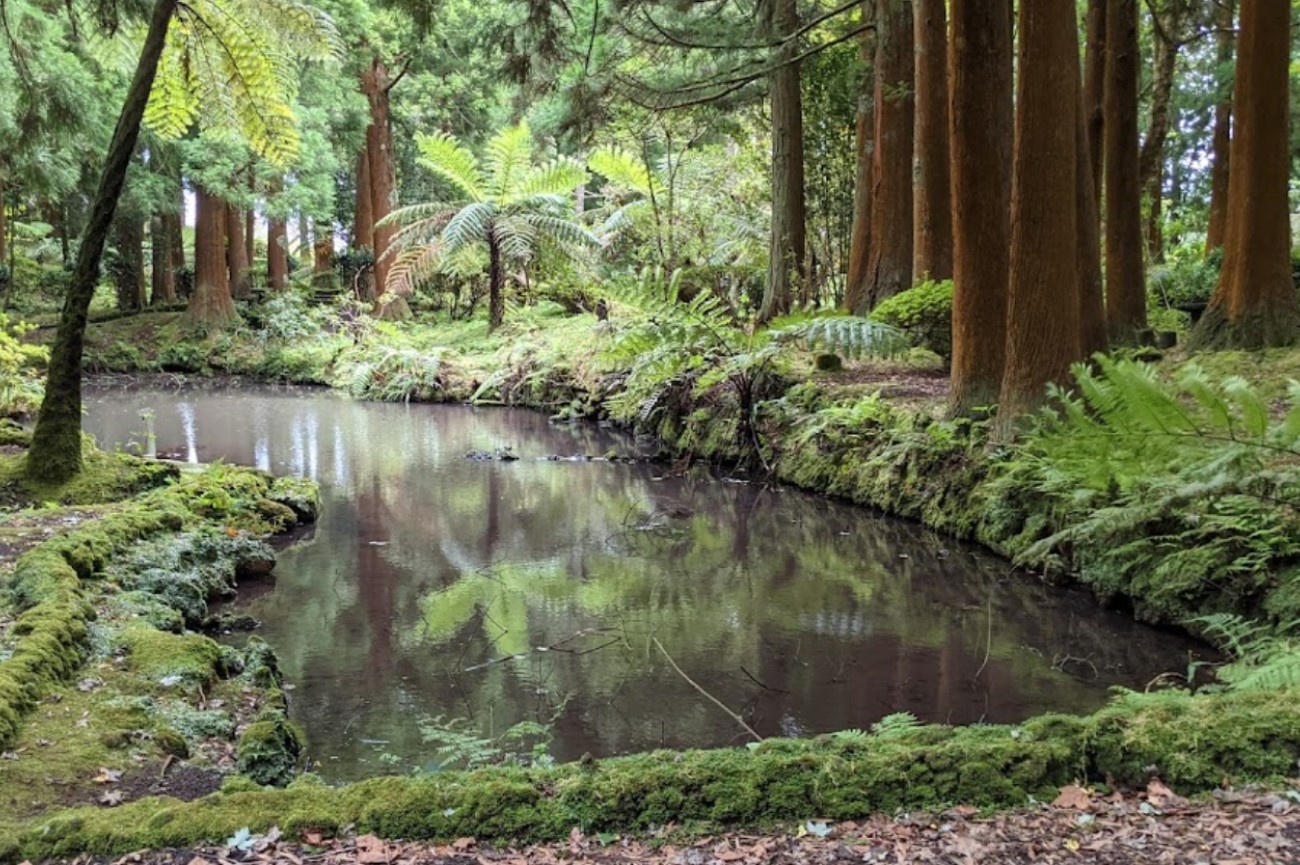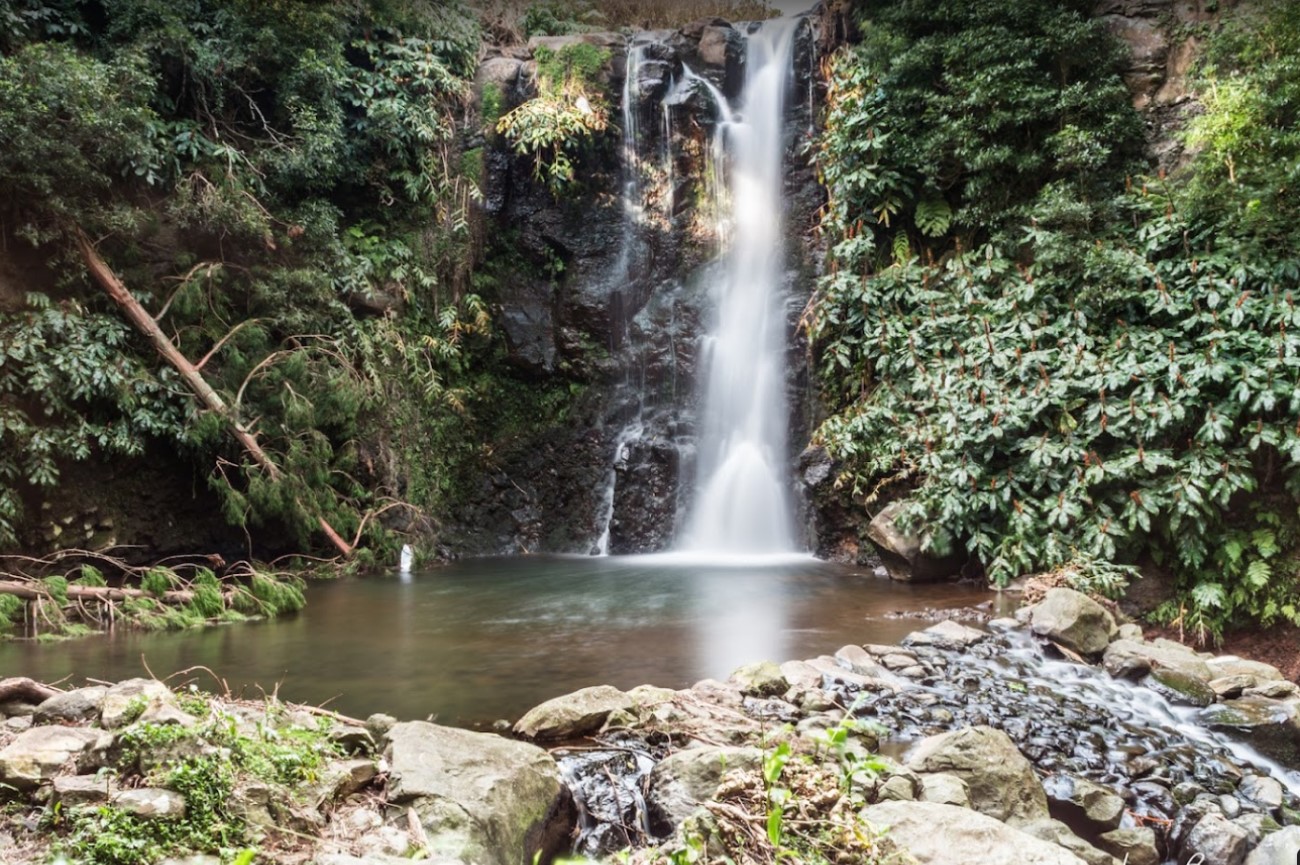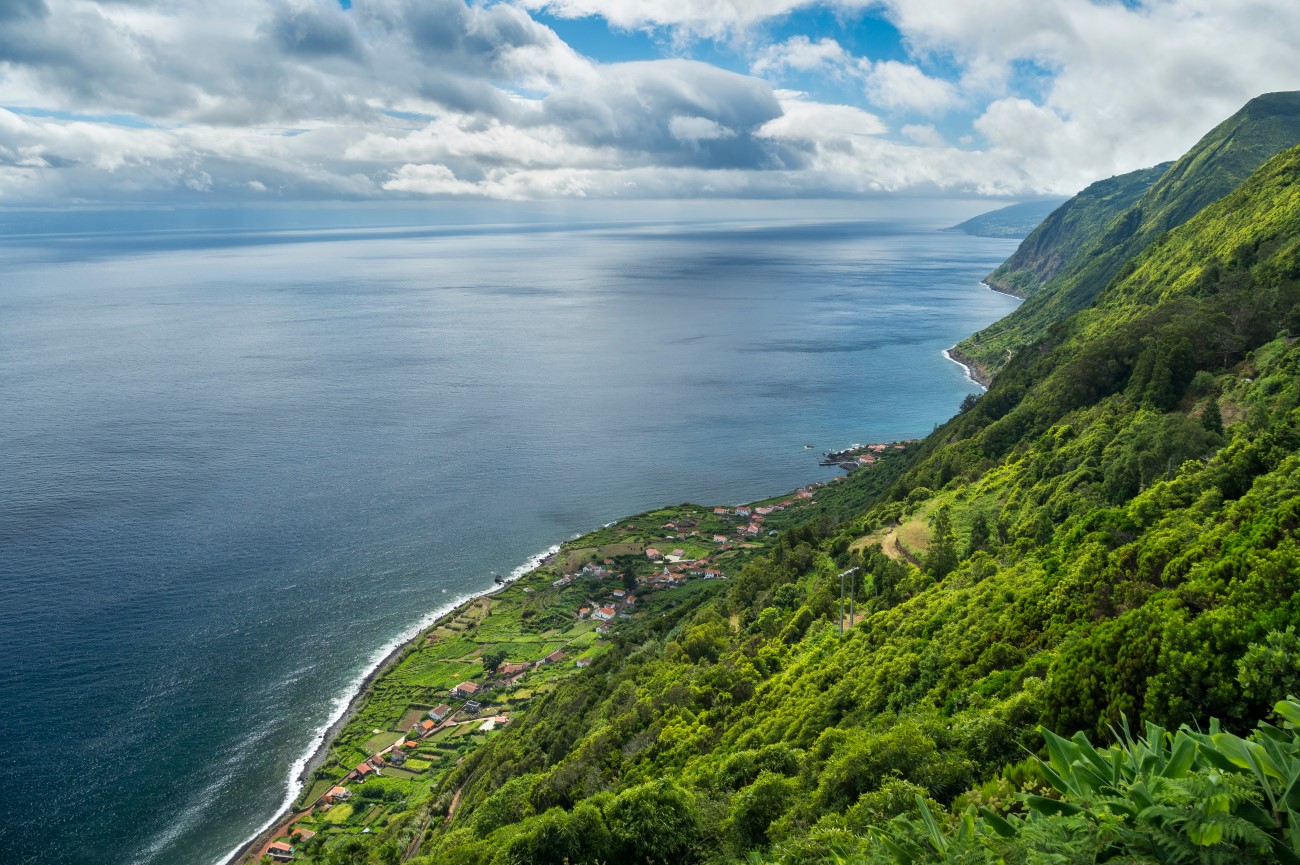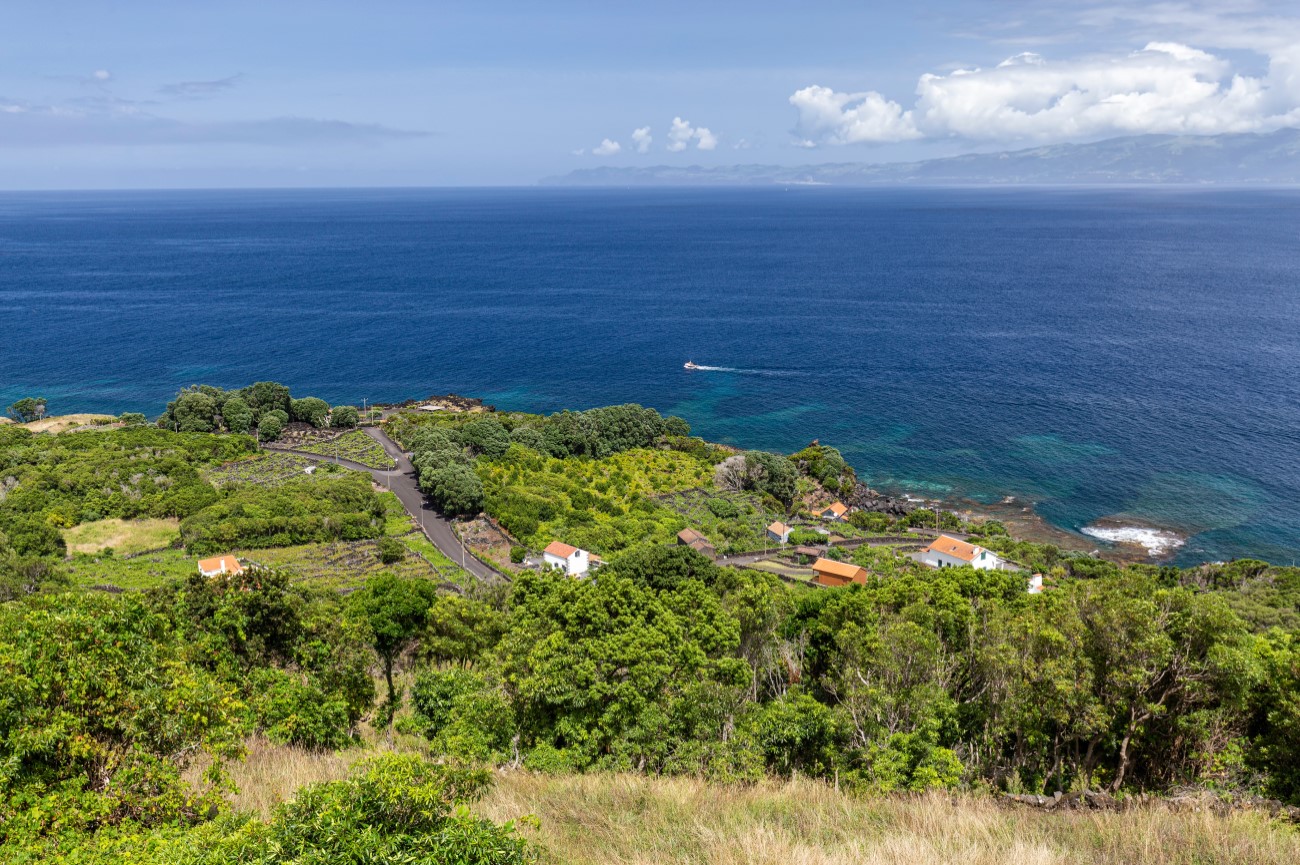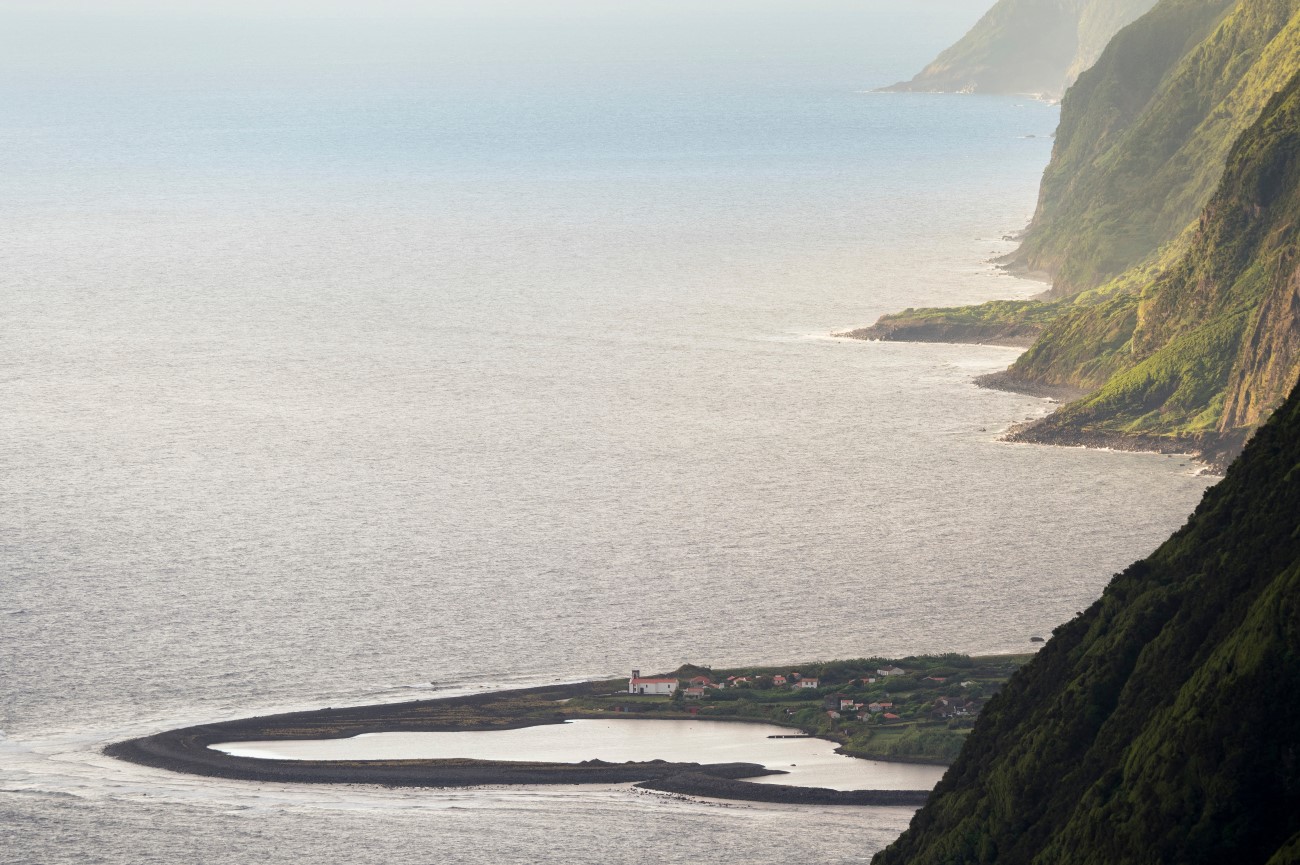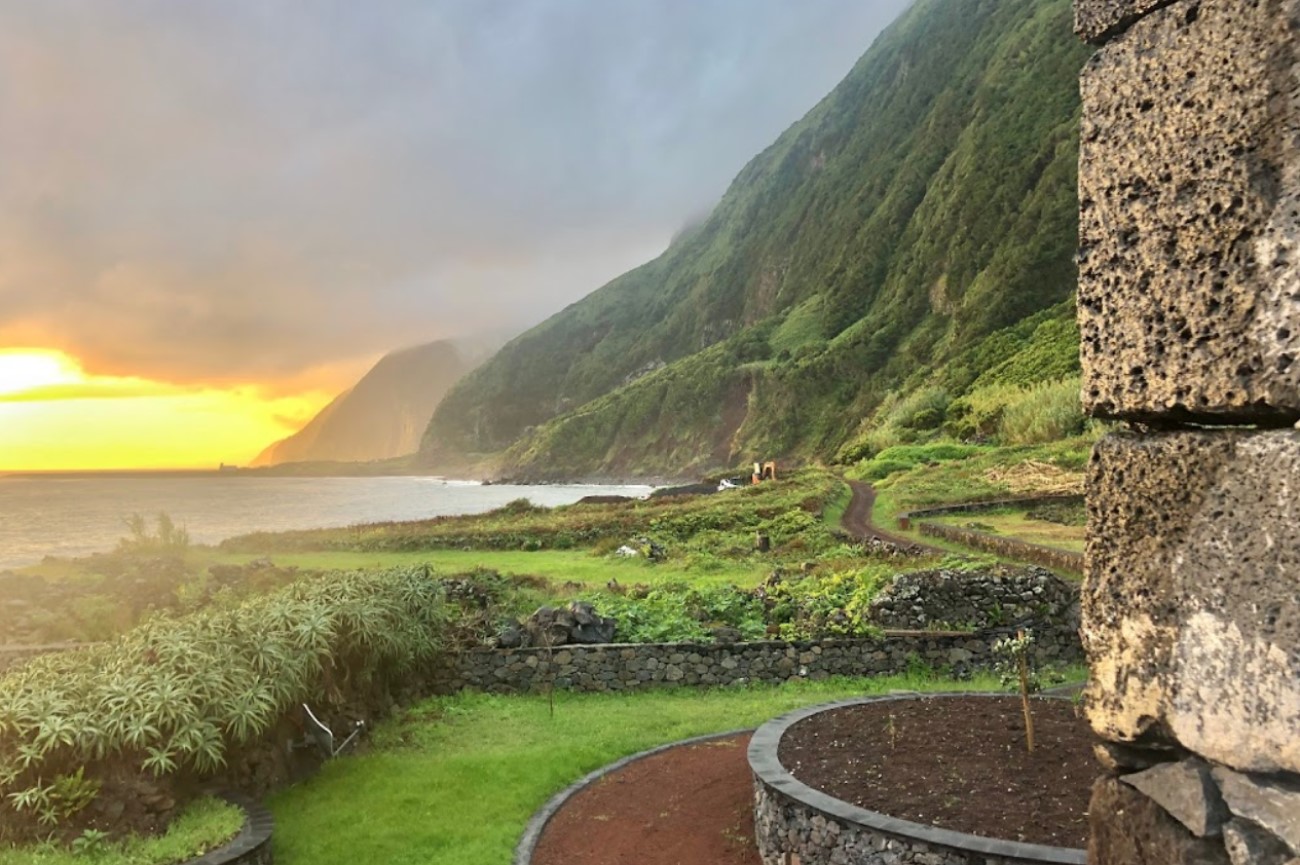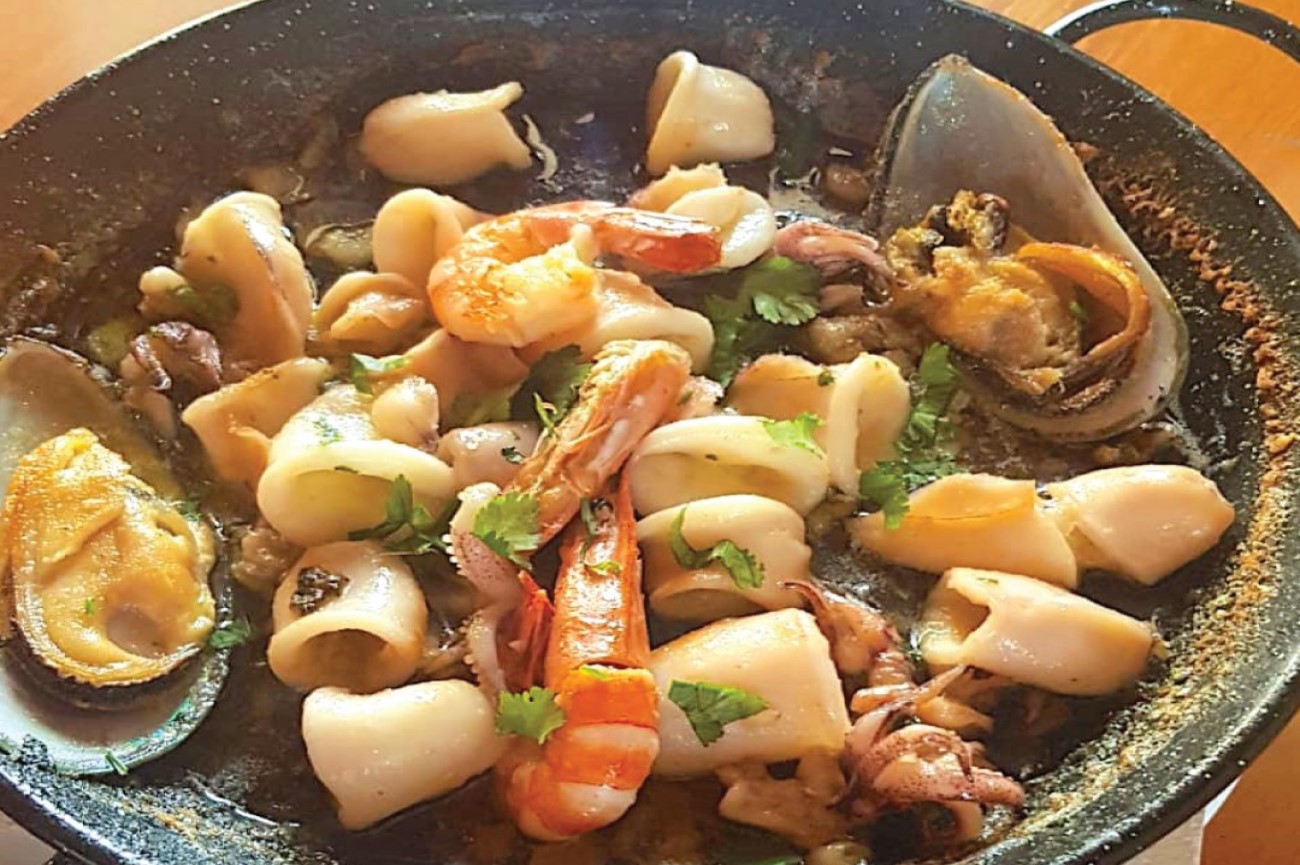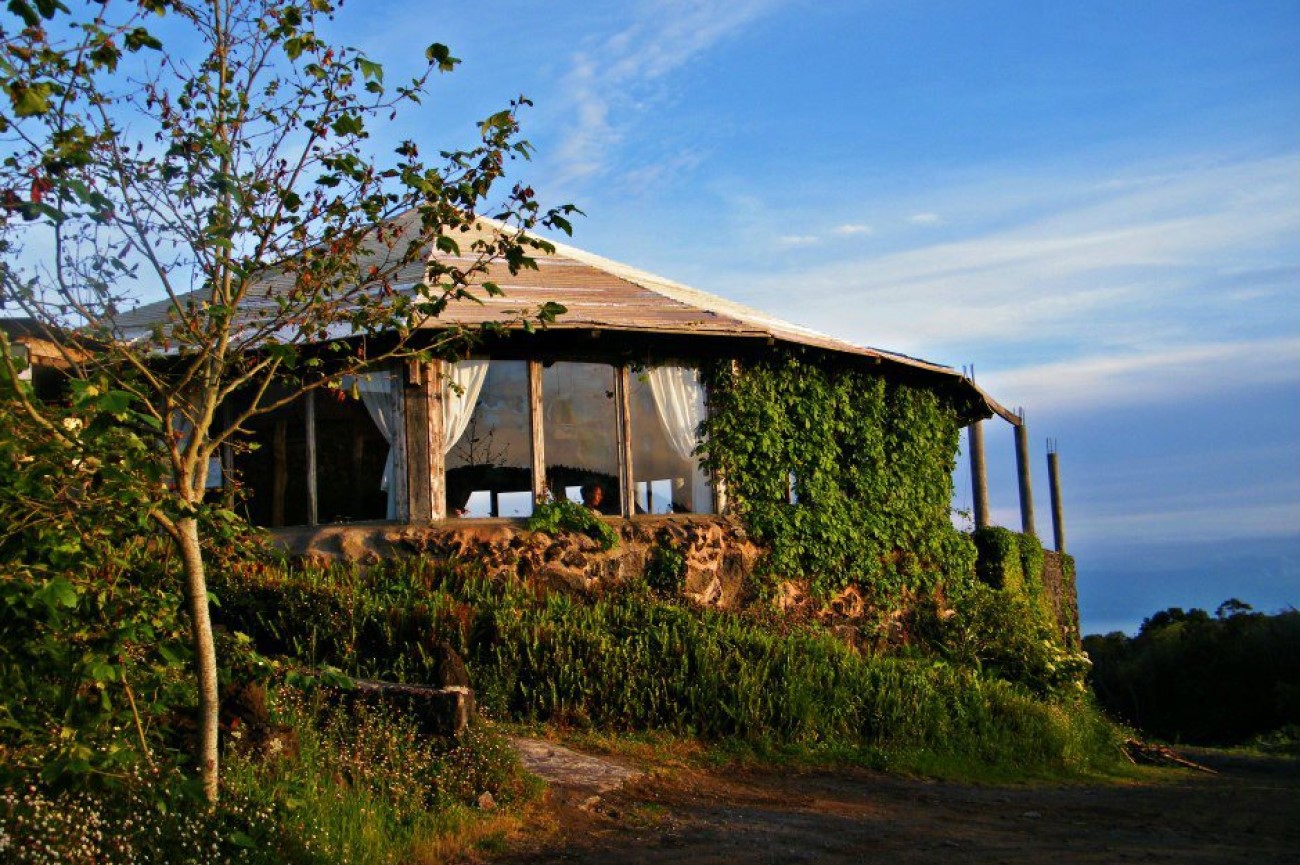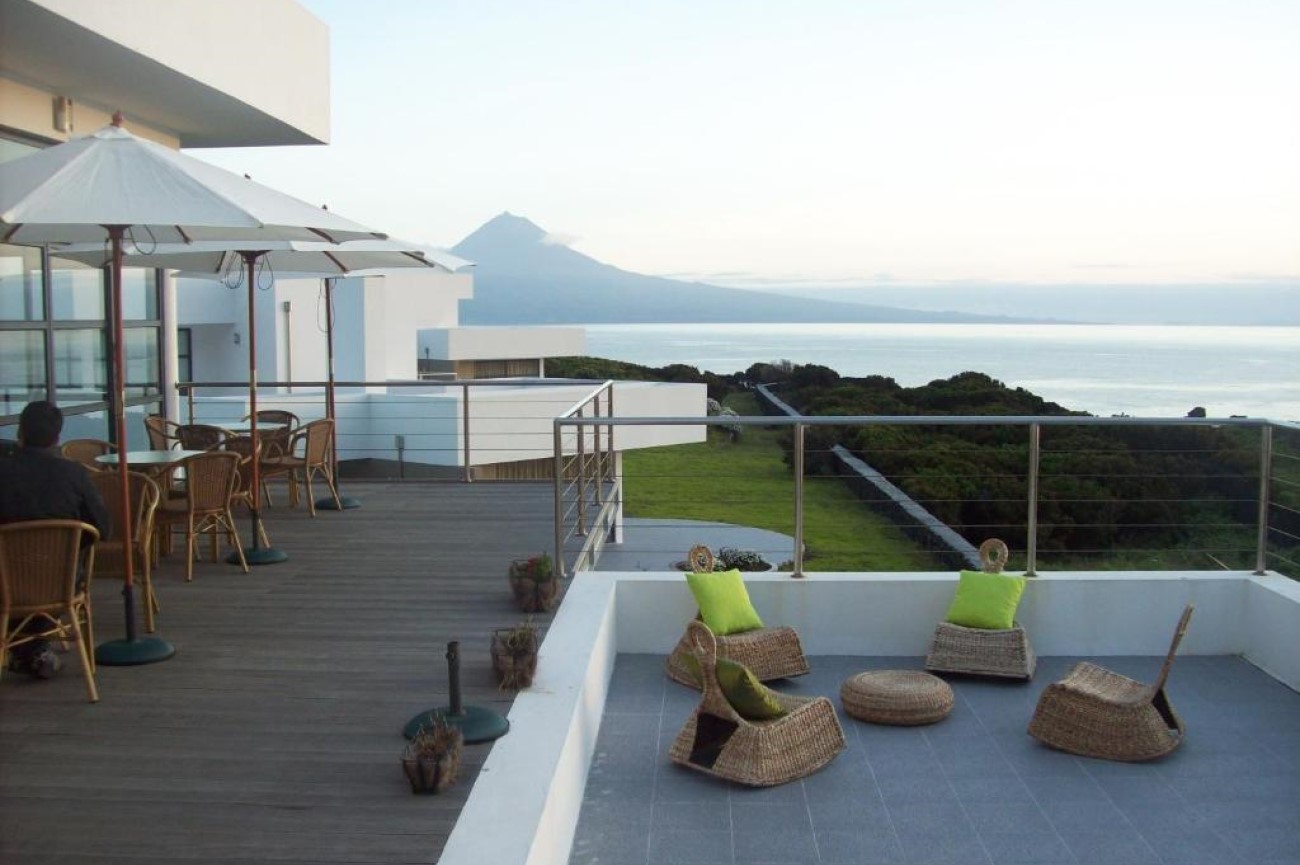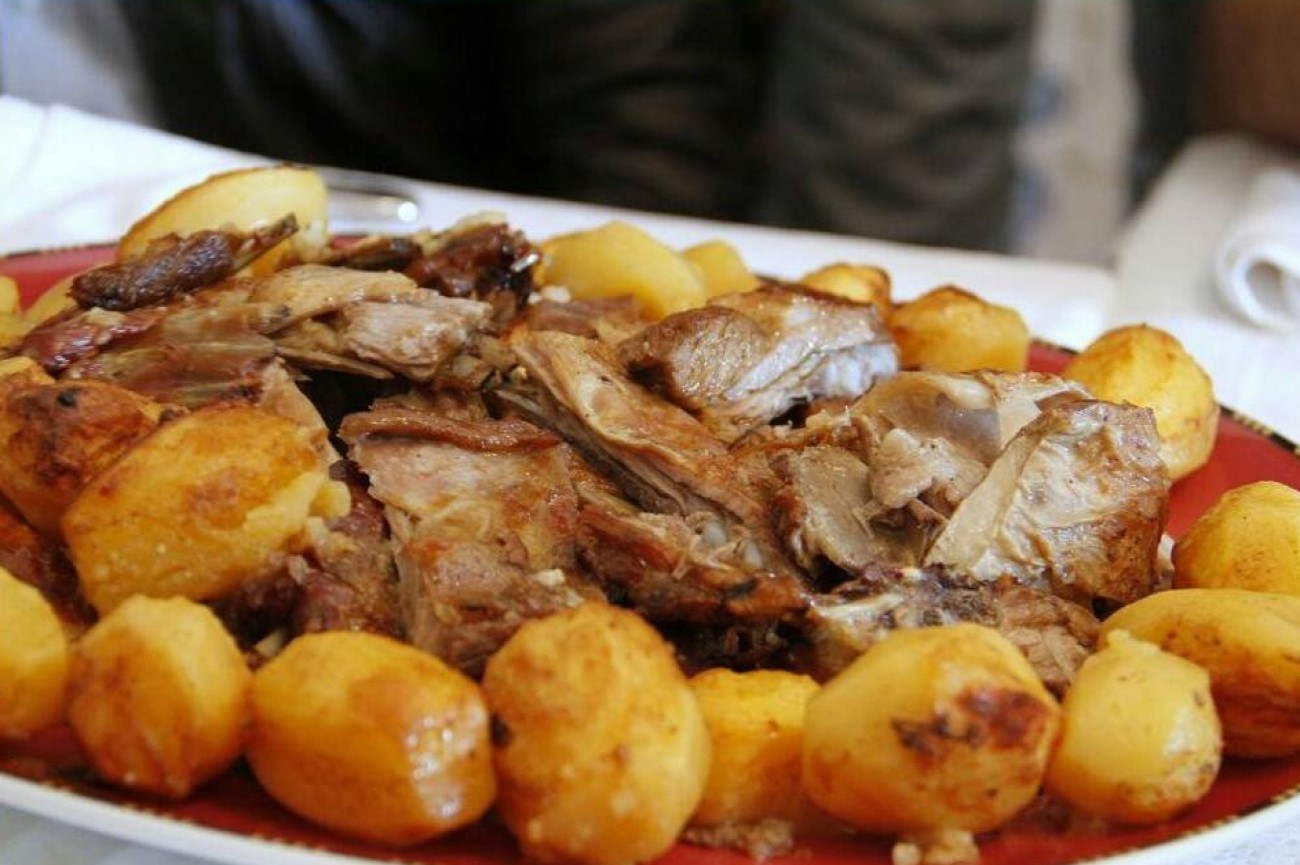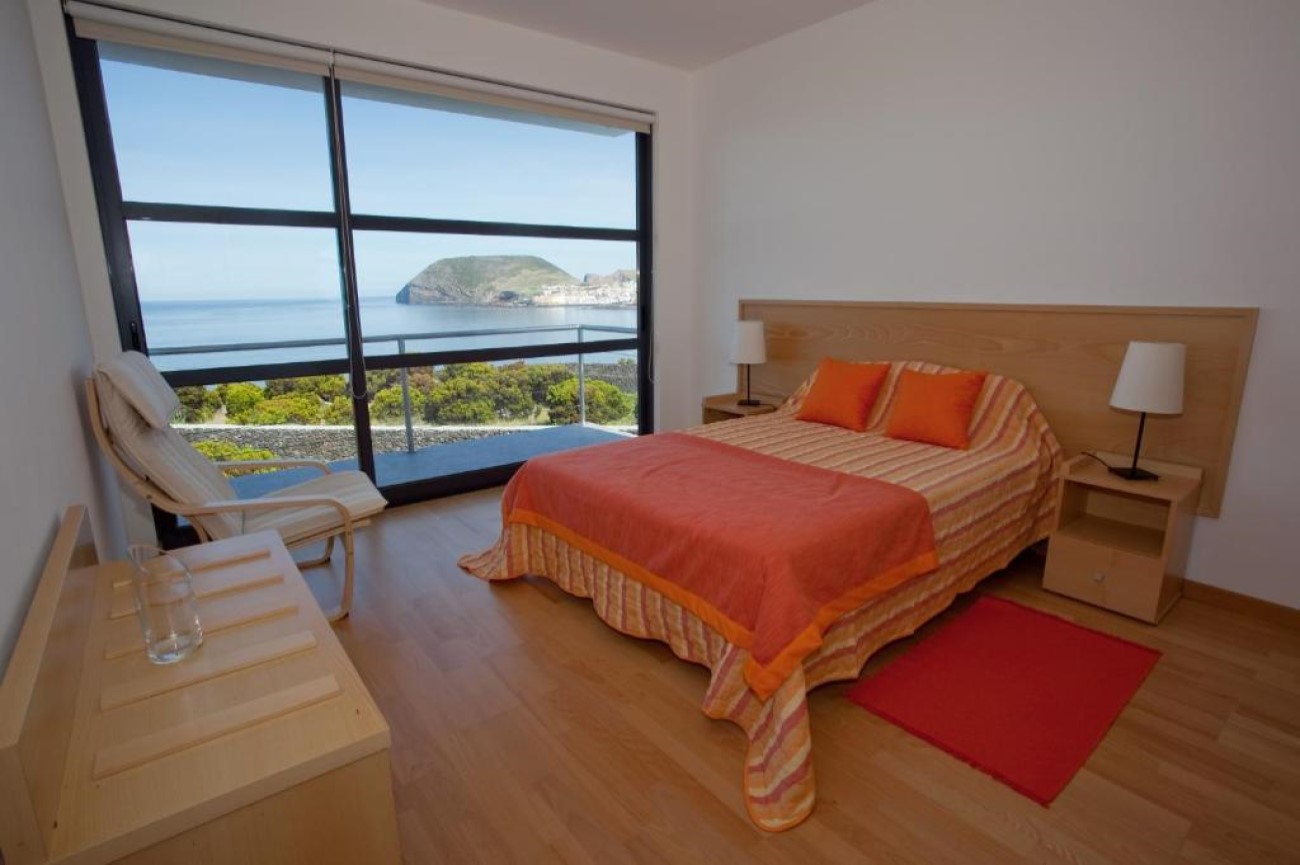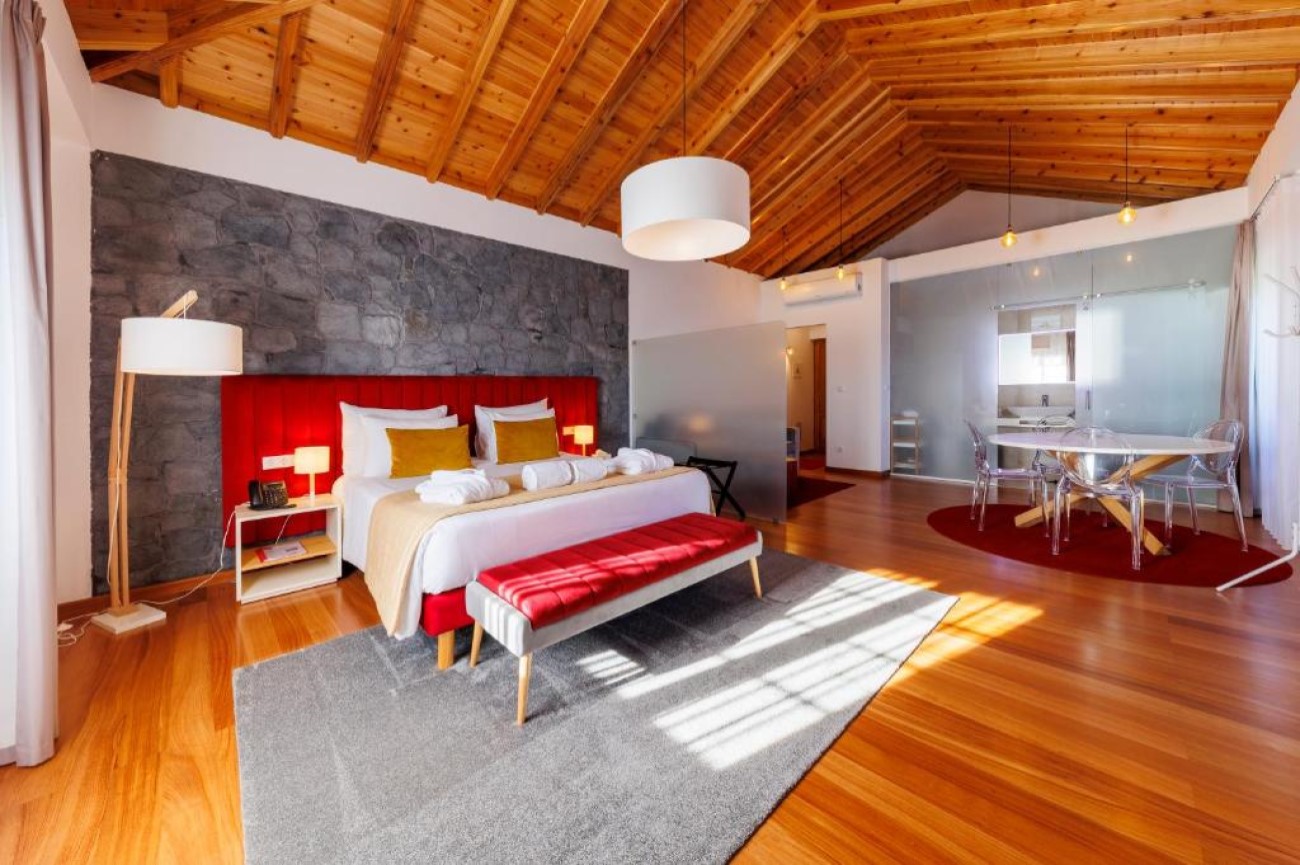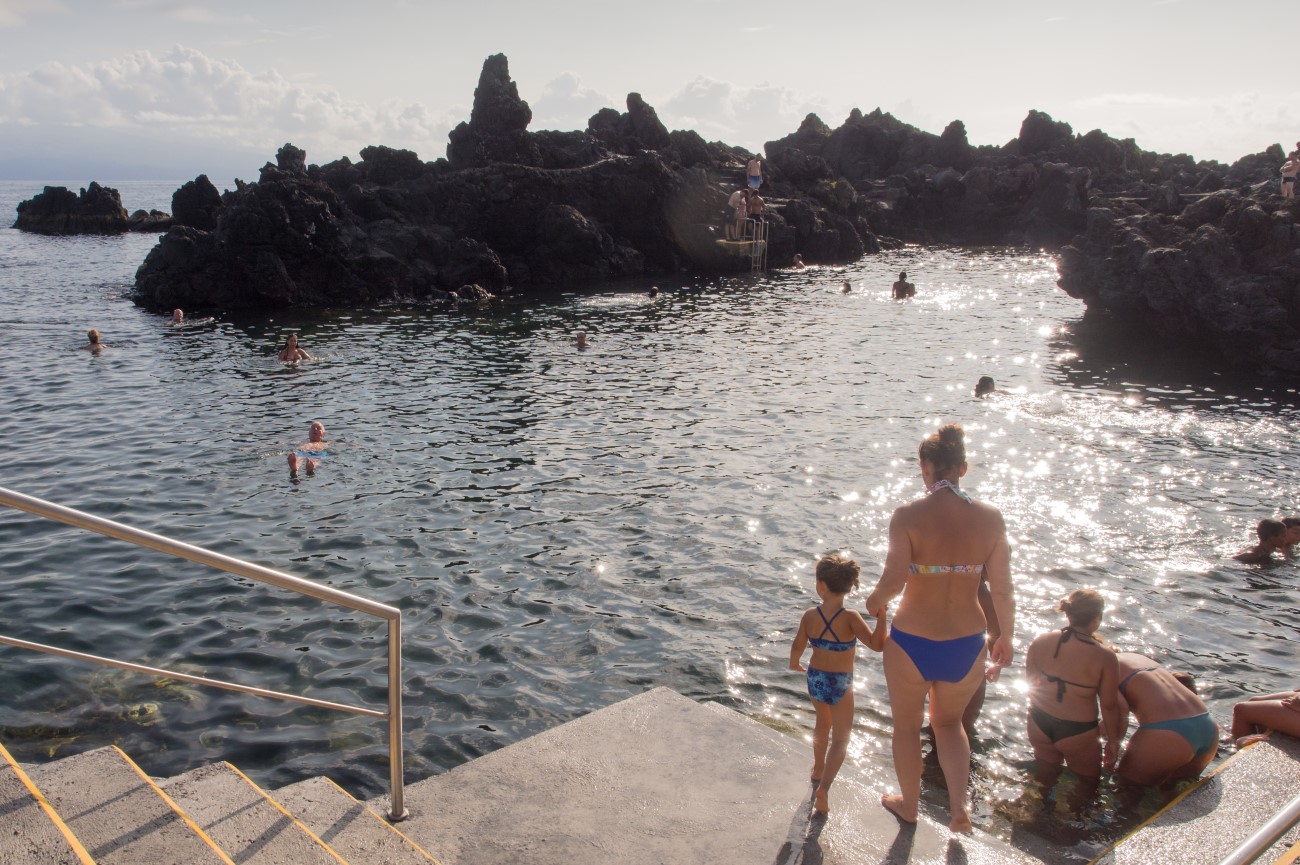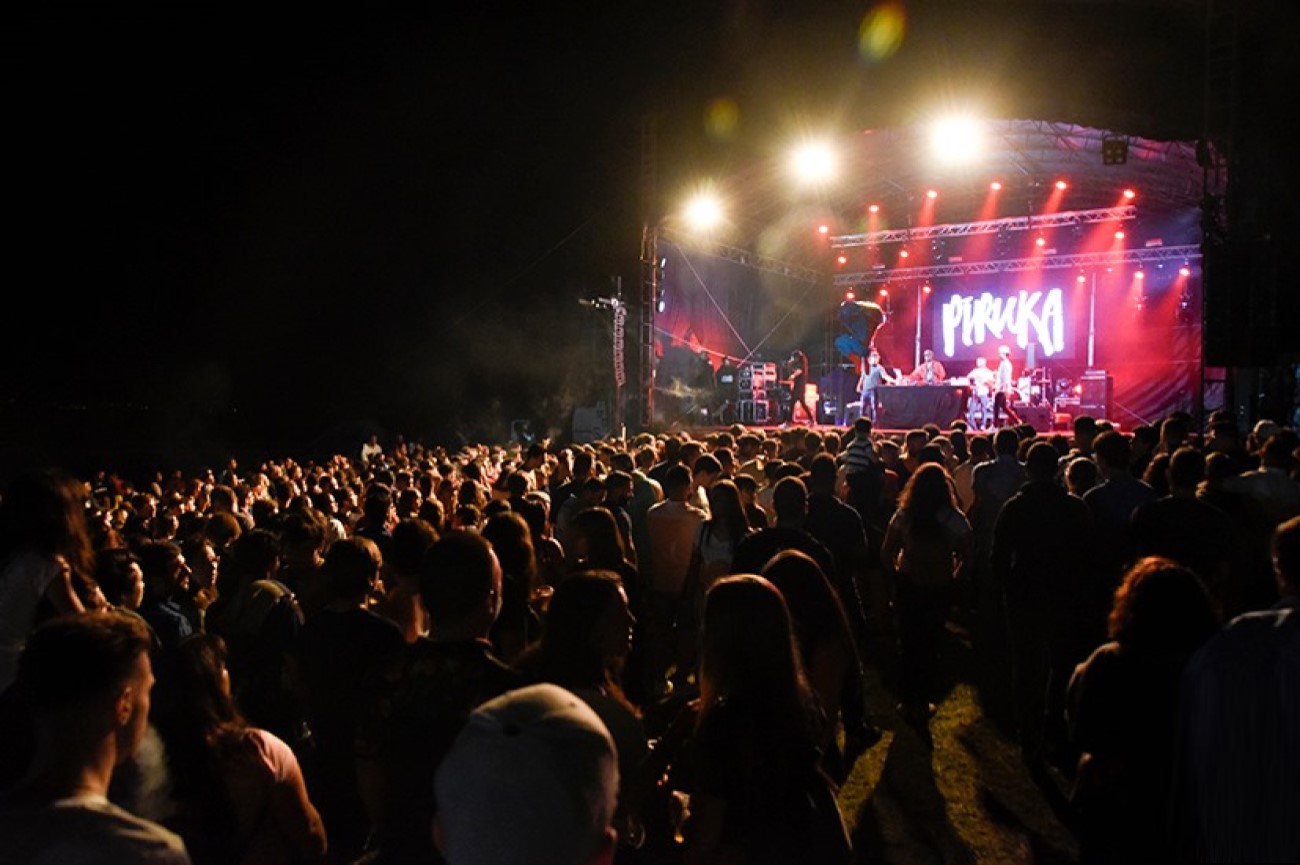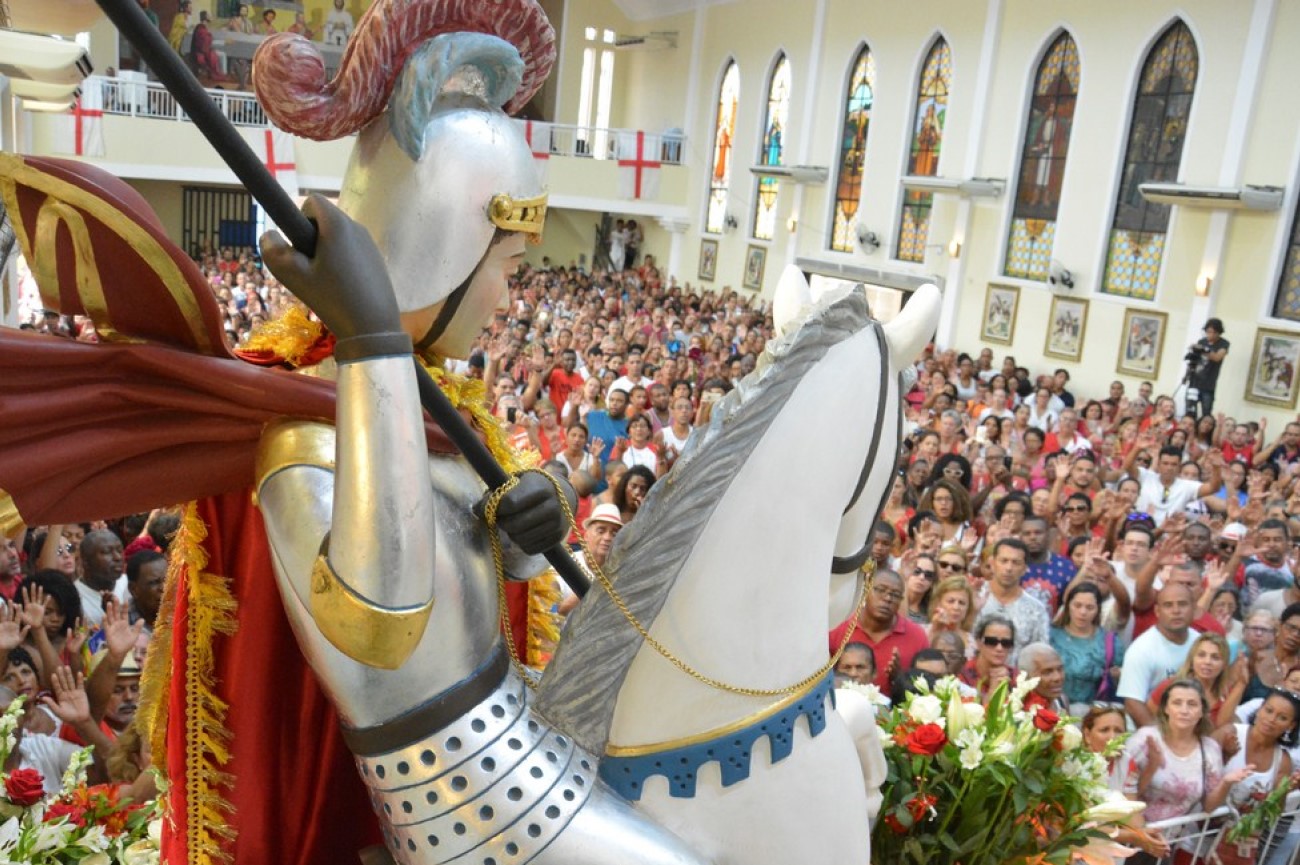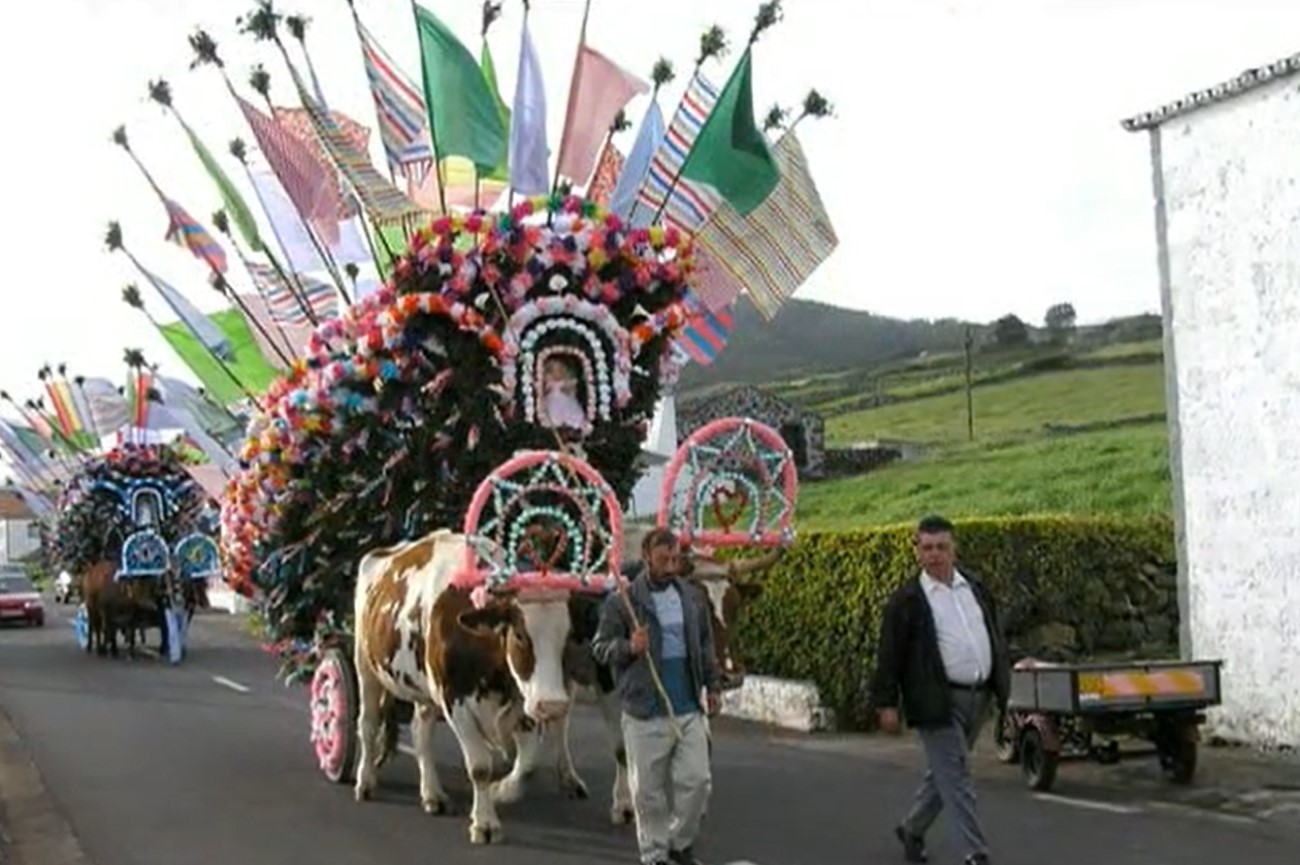things to do in São Jorge Island: 4-day itinerary
São Jorge is a long and slender island with some of the most dramatic landscapes of the Azores. This central island is home to rugged cliffs, stunning mountain peaks, and distinctive coastal fajãs (plains created by lava and landslides). Trails run the length of São Jorge, making it a perfect place for hiking and other outdoor adventures.
Alongside beautiful nature, São Jorge hosts a thriving agricultural sector that produces its famous cheese: Queijo São Jorge, considered to be the best in the Azores. Bananas, guava, and coffee are also grown here, making for delicious snacks while exploring this long sliver of mountainous land.
Our four-day itinerary will show you the best things to do in São Jorge. We cover the top sights on the island, as well as restaurants and hotel recommendations.
Day 1 - South

Morning: Urzelina
We begin our tour of the island in the council of Urzelina. This upscale residential area sits on the south end of the island, just a five-minute drive from the airport. Taking a walk through the town centre, we can see the Igreja da Urzelina. If you take a closer look at the church tower, you will notice traces of the volcanic eruption of 1808, one of the last major eruptions of the Azores.
Around the coast, you can also spot volcanic rocks deposited by the eruption. If you venture onto the seaside cliffs, you will notice the urzela, a lichen used to make dyes, which gives its name to the town. Urzelina is also a great base to explore the iconic red and white mills scattered across the island.
Igreja Santa Bárbara
Our next stop is Igreja Santa Bárbara, a 19th-century Baroque style church located on the outskirts of Urzelina. Walk up the steps to this church, and you will notice the white facade is quite simple and unassuming, but step inside, and you'll witness an artistic masterpiece. The altar area is an ornate array of gilded carvings and panels that tell the story of Saint Bárbara.
Fajã das Almas
Next, it’s time to explore the first of many fajãs that have been created through years of volcanic activity on the island. Also known as Fajã do Calhau, this coastal plain is a collection of volcanic rocks nestled at the base of a cliff. It's a great spot to relax and go for a swim in the beautiful natural pools tucked between the seaside and the cliffs.
Afternoon: Calheta
Further down the coast, you’ll come across one of the main villages of São Jorge, Calheta. Walk through this charming village, one of the oldest on the island, and eventually, you will reach the village port. It’s an ideal spot for diving and swimming and is very popular with locals.
For a sense of perspective and the challenges of building in such a hilly landscape, make sure to stop by the Miradouro da Calheta. From here, you can gaze out at the Atlantic, framed by Calheta in the foreground and the beautiful Pico Island in the background.
Fajã Grande
Before you leave Calheta, make a short detour up the coast to Fajã Grande. This is not only the most populated fajã on the island, but it is also home to a small fishing port and the Ermida do Senhor Bom Jesus, a small 19th-century chapel that boasts fantastic views of neighbouring Pico Island.
Day 1 - São Jorge Tour Map
Day 2 - Centre

Morning: Pico da Esperança
Start your morning with some light exercise on the climb up to Pico da Esperança, the highest peak on the island. Although you can hike up, it is possible to drive near to the crater and walk just the final few metres. From the edge of the crater, you can spot two lagoons and Pico Island in the distance.
Fajã dos Cubres
After descending from the peak, make your way across the island to Fajã dos Cubres. Unique to this fajã are the four small islets surrounded by reed swamps in a central lagoon. As you leave the fajã and head to our next stop, don’t miss the Miradouro da Fajã dos Cubres, a viewpoint over the blue and green landscapes of the fajãs below.
Afternoon: Fajã da Ribeira da Areia
For a more remote experience, we’re heading to Fajã da Ribeira da Areia. This village is accessible by road, though it is tricky. The turns are tight and narrow, but once you arrive, you will be greeted by a rocky lava arch and volcanic caves. There is also a small chapel, the Ermida de Nossa Senhora de Fátima, overlooking the ocean.
Fajã do Ouvidor
By now you’re starting to get a sense of the uniqueness of the fajãs and how important these are to the landscape, but we’ve yet to see the most famous settlement, the Fajã do Ouvidor. Just up the coast from the Fajã da Ribeira da Areia, this popular village is surrounded by lush greenery and rugged cliffs. Enjoy life as a local and spend some time sunbathing and swimming in the turquoise waters of the Poça Simão Dias natural pool.
While heading down to the fajã, or on your way back up, look out for the viewpoint by the side of the road. This is a great spot to get a bird’s eye view of some of the island’s spectacularly unique volcanic plains.
Fajã de Além
Our last stop for the day is Fajã de Além. This fajã is only accessible by foot, but it is a gem to see, especially during the grape harvest season. At this time, many residents return to their homes, and it’s possible to see a truly remote lifestyle.
Day 2 - São Jorge Tour Map
Day 3 - West

Morning: Velas
Today we are starting in the biggest village on the island: Velas. Wander down to the port, where you can take your pick of various water activities and boat tours. A boat tour will give you a new perspective on the island, and you’ll get a good look at the village’s famed volcanic arch.
Back on land, meander through the streets and take a look at some of the regional products sold at the municipal market. Don’t forget to take a quick dip in the nearby natural pools before setting off for the rest of the day. The refreshing blue water pools between jutting basalt rocks contrast stunningly with the ocean background.
Igreja São Jorge
A short walk from the Port of Velas sits the oldest church on the island, the Igreja São Jorge. Take a peek inside to see the ornately decorated gold altarpiece and beautiful wood beamed ceiling. A second alter features a vaulted roof, and in the centre, the figure of the Holy Sacrament is carved from basalt rock found on the island.
União de Cooperativas Agricolas de Lacticínios de São Jorge
It’s nearly time for lunch and our next stop, a local cooperative, is the perfect place to soothe a hungry belly. Sample local cheeses here and find some regional products to take home with you, such as canned tuna and jams.
Afternoon: Fajã de João Dias
While driving up towards the tip of the island, take some time to pass by the Fajã de João Dias. This colourful fajã is one of the most isolated places in São Jorge, and you can only access it via a steep winding trail. Once at the bottom, you will witness breathtakingly dramatic landscapes framing this small seaside village.
Parque Florestal das Sete Fontes
Continue following the road to the northwest, where you’ll stumble upon the Sete Fontes Forest Park. This nature reserve is home to many plant species, such as ferns, azaleas, and fuchsias. You can walk one of the many trails through the thick woods to find a picnic area and children’s playground or enjoy one of several viewpoints looking out onto neighbouring islands. For some history, visit the small chapel of São João Baptista, a monument built in commemoration of the many Azorean emigrants worldwide.
Ponta dos Rosais
We end our day at the westernmost tip of the island, at the ruins of Ponta dos Rosais. Walk around this lighthouse complex to learn where lighthouse keepers used to live and what was needed to support the facilities. Watch the sunset across the horizon and cast its shadows onto the neighbouring islands of Pico and Faial.
For a different vantage point, climb up the hill to the Miradouro da Vigia. Here you can discover the history of whale-hunting on the island and see the lighthouse complex from above.
Day 3 - São Jorge Tour Map
Day 4 - East

Morning: Farol do Topo
Experience São Jorge the way its first settlers did by heading to the village of Topo. It was on this eastern tip where São Jorge’s first settlers disembarked onto the craggy cliffside centuries ago. You’ll notice a lighthouse from which you can see the Ilheú do Topo, a small islet home to many migratory birds. If you’re lucky you may even spot cattle grazing on the islet.
For a refreshing start to the day, jump into the crystal clear waters of the natural pools here. Popular among residents, these pools offer a relaxing swim and a closer look at the volcanic rocks.
Cascata do Cruzal
As you leave Topo, take the opportunity to visit the Cascata do Cruzal. A short trail leads to this waterfall hidden in the lush forest and flora of the region.
Fajã de São João
Follow the road west until you reach the steep winding road leading to the Fajã de São João. It's the largest fajã on the south side and a great place to relax and enjoy the delicious local seafood.
Afternoon: Fajã dos Vimes
The villages of São Jorge have seen many effects of volcanic and seismic activity, and the Fajã dos Vimes is no different. This area was entirely destroyed in 1757 when a tremor hit the island, but today it is famous for its coffee plantations. Don’t miss a cup of local brew from Café Nunes, a family-run coffee plantation and artisan space.
Fajã dos Bodes
Accessible from Fajã dos Vimes, you can walk to Fajã dos Bodes. This is where cattle are often sheltered in the winter months, and is a great place to witness the island's traditional lifestyle.
Fajã da Caldeira de Santo Cristo
Last but not least on our tour of São Jorge is one of the most inaccessible places on the island, the Fajã da Caldeira de Santo Cristo. To reach this village, you must hike either from Fajã dos Cubres or from Serra do Topo, enjoying stunning ocean vistas and remarkable waterfalls enroute.
Fajã da Caldeira de Santo Cristo was created only in 1757 after a tremor hit the island. With time, the seawater erosion created a central lagoon that locals now use for swimming. There is also a vibrant surfing community forming here. Each September, you can experience the local procession that ends at the Ermida de Santo Cristo, the village chapel.
Day 4 - São Jorge Tour Map
Other places to visit in São Jorge
- Fajã do Belo: This fajã, which is situated between Fajã dos Cubres and Fajã da Caldeira de Santo Cristo, doesn’t have any permanent residents. Many houses here got converted into holiday homes after the earthquake of 1980.
- Grutas do Algar do Montoso: Get to know one of the largest volcanic chimneys on the island by exploring these caves in the council of Calheta. You should wear protection and have a guide with you to really understand the complexity of the landscape.
Top things to do with kids in São Jorge
One of the best things to do as a family in São Jorge is to explore the island's fajãs. There are over 70 of them scattered across the island, each with its own character. You can learn more about them at the Centro de Interpretação da Fajã da Caldeira de Santo Cristo.
Take the kids to Pico da Esperança, the highest point on the island. If the sky is clear, you'll be able to spot other surrounding islands like Faial, Pico and Terceira. If you're visiting in the summer, you can enjoy a swim in the natural pools. Poça Simão Dias is a favourite with its crystal clear waters and mild temperatures. Other popular spots include the Lagoa da Fajã de Santo Cristo and the natural pools in Velas.
If you’re feeling adventurous, you can head to the Grutas do Algar do Montoso, one of the largest volcanic chimneys in Portugal. You can also explore the forest park of Sete Fontes and enjoy a picnic amid the trees.
Where to eat in São Jorge
Fresh fish and succulent meat are the base of São Jorge's cuisine. Popular dishes include the caldeirada de peixe (fish stew), alcatra (rump steak) and clams. You should also try the local cheese, which has a bit of a spicy kick. Below are some of the best places to eat in São Jorge where you can try some of these delicacies:
- Sabores Sopranos: Located near Calheta, this place is famous for its meat dishes. Specialities include the tábua de novilho (veal board) and the estendal da casa (black pork board).
- Fornos de Lava: This restaurant around Velas is an ideal place to sample the regional cuisine. Make sure to order the cataplana (seafood stew). While you’re waiting, you can enjoy the breathtaking views of Pico island from the windows.
- Cantinho das Buganvilias: Part of a resort, this upscale restaurant offers delicious local cuisine with a view over Pico and the town of Velas. The menu includes a mix of meat and seafood dishes.
- O Caseiro: Set in Topo, this restaurant stands out with its rustic stone interior. It offers homemade dishes at an affordable rate. You can choose from the buffet or order à la carte.
Where to stay in São Jorge
- Cantinho das Buganvilias (4 stars): Sitting atop the mountains, Cantinho is a luxurious accommodation in Velas offering apartments with private patios. Each apartment comes with a kitchenette, dining area, and seating area. The furnished terrace is a beautiful spot to unwind with a hot tub and an infinity pool. Many activities are available here, such as nature walks and diving or relaxing massages at the wellness centre on-site.
- Blue Planet: Overlooking the sea, this centrally located hotel is minutes away from the centre of Velas. Units here come with a seating or dining area and a fully equipped kitchenette. Free parking is also available for those renting a car.
- Quinta da Magnólia: Sitting right by the sea in Urzelina, this quaint Quinta guarantees suites with a view. Whether it’s the mountains, or the sea, each of the ten suites provide fantastic views of the local landscape. Each suite has a name and decor connected with the fajãs on the island. You can also enjoy a nice dip in the hotel pool and marvel at the stunning views of Pico Island.
Best time to visit São Jorge
As with most islands in the Azores, the weather in São Jorge is renowned for its high humidity levels, rain and mild temperatures. In winter, it can rain or even snow in the higher parts of the island, while summer brings in warmer and sunny days. With that in mind, the best time to visit São Jorge is between June and September. Visiting during these months will allow you to make the most of the weather and enjoy some of the island's traditional festivals.
São Jorge festivals
- Semana Cultural das Velas: Held in the first week of July, this is a popular and lively festival in Velas. The festival features a variety of events and activities, including sports, regattas, music shows, and regional cuisine.
- Festas de São Jorge: Each year in the month of April, the municipality of Velas celebrates its patron saint. These festivities promote the island’s traditions, with the biggest celebration being held on the 23rd of April.
- Festas do Espírito Santo: The main festivities in São Jorge take place in the weeks before Easter. For seven Sundays leading up to Easter, there are both religious and secular ceremonies with differing local traditions.


